LoopGear SK-05 Pro MAO Flashlight Review
The LoopGear SK-05 Pro MAO flashlight features a new finish, and still has accessible 18650 cells (included) as well as a high output triple and throwy single.
Official Specs and Features
Here’s a referral link to the LoopGear SK-05 Pro MAO flashlight product page.
Versions
There are at least two versions of the LoopGear SK-05 Pro MAO flashlight. Three body colors are available: black, grey, and this new MAO. There’s a non-Pro version too. This Pro version comes with two flood emitter options – Nichia 519a or higher output Luminus SST25.
Price
This version of the LoopGear SK-05 Pro MAO flashlight comes in at an MSRP of $152.99. It’s available now at Amazon!
You can also purchase this through LoopGear directly. Here’s a link to the LoopGear SK-05 Pro MAO flashlight and a coupon! code: zeroair
What’s Included
- LoopGear SK-05 Pro MAO flashlight
- LoopGear 4000mAh 18650 (2)
- Charging cable
- Pocket clip (with screws and tool for mounting)
- Manual
Package and Manual
Build Quality and Disassembly
The LoopGear SK-05 Pro MAO flashlight is very much like the LoopGear SK-05 (non-Pro). There are a few differences, most of which are important later in the review. But general build quality is the same between models – very good.
Of course, one of the biggest differences is that the cells are accessible! So inside the light, you can see that the positive contact is a big button.
And the other end, where negative contact is made, there are dual springs.
Maybe more important to you, dear reader, than the difference in the non-Pro and the Pro is the difference in this MAO and the Pro non-MAO. I’ve reviewed the LoopGear SK-05 Pro flashlight before, but that was the Nichia 519a triple version, which offers high CRI. This cool white triple version offers higher output, and obviously, MAO finish! Much of the text (and some of the data) between that review and this one will be the same.
Size and Comps
106mm x 47.8mm x 22.5mm and 235g. Notably, this is the same size as the non-Pro. (And 10 grams heavier.)
If the flashlight will headstand, I’ll show it here. If the flashlight will tailstand, I’ll also show that here, too!
Here’s the test light with the venerable Convoy S2+. The version below is a custom laser-engraved Convoy S2+ host by GadgetConnections.com. I did a full post on an engraved orange host right here! Or go straight to GadgetConnections.com to buy your Convoy S2+ now!
In the photo above, you may note that the SRM (standard reference material) flashlight for comparison has changed! I used a TorchLAB BOSS 35 for ages. Now, what you can see as the 18350 SRM is the Hanko Machine Works Trident. While I have not reviewed or tested the Gunner Grip version seen here, I have tested a Hanko Machine Works Trident Total Tesseract in brass. I love the Trident, and it’s a striking contrast next to the inexpensive Convoy S2+, which also makes a great standard reference material.
Retention and Carry
Unlike the non-Pro, there’s a pocket clip included here. It’s not attached, but two screws (and two extra) are included. A screwdriver (TORX) is also included, too!
A little sticky sticker is included. The manual doesn’t say where it goes, nor is there any real instruction on how to install the pocket clip. But it’s not hard to understand.
I believe the clip is formed so that it could be installed in either direction. Opposite to how I have it below might be better, and allow a deeper carry. Both orientations allow access to the lanyard loop, which you can see most clearly below. No lanyard is included.
There’s a strong magnet in the tailcap. It’s perfectly sufficient for holding the LoopGear SK-05 Pro MAO flashlight horizontally or vertically.
Above, you may note a new holder for my magnetic-tailcap items. That’s the Exceed Designs Hyzer Titanium Mini Hatchet D2 axe. The handle (as the name suggests) is titanium. But the blade is D2 steel and perfect for retaining magnetic tailcap flashlights! The Hyzer is available in a bunch of cerakote body colors as well as different thickness D2 heads.
Power and Runtime
The LoopGear SK-05 Pro MAO flashlight uses two 18650 cells. The two that are included are 4000mAh standard 18650 cells.
The cells go into the light with the button (positive end) toward the head. They are parallel, too, so they both go in the same direction. This does mean that the light can run with just one cell!
Here’s the little lever where you can access the hinged cell cover. There’s a lock switch for this cover, too.
Runtime tests are below. There is no test for output with both emitters, as the manual does not make any claim about that output level. Performance is exactly the same (in profile) as the Nichia version, but this Luminus SST25 version has higher output.
The light shuts off with low voltage protection. There’s a prominent side RGB COB that alerts the user to the approximate cell voltage at startup. In fact, you don’t even have to turn the light on – just switch the rotary dial away from lockout mode, and the indicator will display the charge level. It’s basically a power meter. Red means basically empty (“0%”), and anything blue is higher than that. So, for example, if the indicator is half blue and half off, the charge is approximately 50%.
Charging
UBS-C charging is used for the LoopGear SK-05 Pro MAO flashlight. The port is near the head and has a press-in silicone cover.
A C to C charging cable is included.
Charging looks fine – While C to C delivers less current, it’s delivered at 12V, so is overall much quicker. A to C also works fine, but at 5V and a higher current still takes over 3 hours.
The RGB COB on the side indicates the charging status.
Powerbank
The LoopGear SK-05 Pro MAO flashlight is capable of being used as a powerbank. There are indications on the side – the light can be charged at 5, 9, or 12V, and can also output (powerbank) at 5, 9, and 12V.
I tested the powerbank of the non-MAO only at 5V, but it seems to perform just fine.
Output proceeds at around 3.3A for over an hour. At that point, the powerbank is basically depleted (around 3V) but it’ll still output at lower currents for a little while.
Modes and Currents
| Mode | Mode Claimed Output (lm) | Claimed Runtime | Measured Lumens | Tailcap Amps |
|---|---|---|---|---|
| Turbo – Flood | 3060-950-50 | 40s+2.5h+30m | 2474 (0s) 2195 (30s) |
8.76 |
| High – Flood | 950-50 | 3h+30m | 819 (0s) 815 (30s) |
1.55 |
| Med – Flood | 350 | 11h | 303 | 0.51 |
| Low – Flood | 50 | 52h | 52 | 0.12 |
| Turbo – Spot | 1300-600-40 | 40s+5.5h+30m | 1552 (0s) 1385 (30s) |
6.24 |
| High – Spot | 600+40 | 5.5h+30m | 673 | 1.50 |
| Med – Spot | 220 | 11.5h | 254 | 0.45 |
| Low – Spot | 40 | 58h | 40 | 0.08 |
Pulse Width Modulation
Only the highest mode for each output uses PWM. That’s striking. The off-cycle is very brief, though, so it’d be nearly impossible to notice this PWM.
Here you can see a “baseline” – a chart with almost no light hitting the sensor.
Then there’s the Ultrafire WF-602C flashlight, which has some of the worst PWM I’ve seen. It’s so bad that I used a post about it to explain PWM! Here are multiple timescales (10ms, 5ms, 2ms, 1ms, 0.5ms, 0.2ms) to make comparing this “worst” PWM light to the test light easier. That post also explains why I didn’t test the WF-602C at the usual 50us scale.
User Interface and Operation
There are two ways to interact with the LoopGear SK-05 Pro MAO flashlight. First, there’s a rotary dial. It has four positions. Locked (seen below), flood, spot, and side RGB (in that order).
Next is the e-switch, right in the center of that rotary dial. It’s a very big switch with good action.
As stated above, there’s a rotary dial with four positions. You’ll want to rotate this dial to your output of choice, then follow the actions in the user interface table below! Note that the user interface for Spot and Flood seems to be the same.
One update to this Pro version is that there seems to be a delay. This is probably to prevent accidental activation. So in every case, the dial will need to have been rotated before the e-switch will work.
| State | Action | Result |
|---|---|---|
| Off | Click | On (Mode memory) |
| On | Click | Off |
| Off | Hold | Momentary Turbo (both emitters) |
| Rotary set to Floodlight or Spotlight Off |
Double click | Turbo (selected emitter(s)) |
| Rotary set to Floodlight or Spotlight On |
Hold | Mode advance (LMH only) |
| Rotary set to Floodlight or Spotlight Any |
Click 3x | Strobe (both emitters) |
| Rotary set to Floodlight or Spotlight Strobe |
Click then hold | SOS (reverse direction works too) |
| Rotary set to Special Mode Off |
Click | RGB COB On (Mode memory) |
| Rotary set to Special Mode Off |
Click 3x | Red-blue flash warning light mode |
| Rotary set to Special Mode
On |
Double click | Advance through Lighting options (Steady White > Steady Color > Fade in/out Color > Slide Color > Dash Color > Rainbow Slide) |
| Rotary set to Special Mode On |
Hold | Advance through Color options for specific lighting options (or advance through 3 lighting levels for COB White). |
| Side white on | Click 4x | Advance through: Warm white, Neutral White, Cool White (side light) |
| RGB on | Hold | RGB mode advance for that output style |
Various clicks can perform various things for the RGB levels. Suffice it to say that the RGB options are greatly increased for the Pro version. You can speed up the cycling of some RGB options. Many of the RGB options have low/medium/high, too. It’s pretty impressive!
Loop Gear SK-05 Pro MAO Flashlight LED and Beam
There are two options here for output. In the photo below, the left emitter is the “Spot” output – it’s a Luminus SFT25R. The triple on the right is three Luminus SST-25 emitters.
The side emitters are RGB, including three variations of white.
LED Color Report (CRI and CCT)
CRI and CCT are not mysteries – LoopGear claims the flood triple to be 6500K, and that’s approximately right – I measure it as 5400-5800 CCT. CRI for this high output triple is low.
The middle row is the spot emitter – CCT is cool or very cool, and CRI is low.
The last row is the side warm white. I didn’t test neutral or cool for this side emitter array. These are very unusual, in that they’re warm white and very low CRI. Possibly the lowest CRI I have ever observed on a “white” emitter.
CCT (Correlated Color Temperature) refers to the measurement of the color appearance of light, expressed in Kelvins (K), which indicates whether the light is warm (yellowish) or cool (bluish). A lower CCT (below 3000K) is considered warm light, while a higher CCT (above 5000K) gives cooler, bluish light.
CRI (Color Rendering Index) is a measure of how accurately a light source renders colors in comparison to natural sunlight. Scored on a scale from 0 to 100, higher CRI values indicate that colors appear more true to life and vibrant, similar to how they would look under the sun.
Beamshots
These beamshots always have the following settings: f8, ISO100, 0.3s shutter, and manual 5000K exposure. These photos are taken at floor level, and the beam hits the ceiling around 9 feet away.
Tint vs BLF-348 (KillzoneFlashlights.com 219b version) (affiliate link)
I keep the test flashlight on the left and the BLF-348 reference flashlight on the right. These photos are taken around 18 inches from the door.
I compare everything to the KillzoneFlashlights.com 219b BLF-348 because it’s inexpensive and has the best tint!
Summary and Conclusion
The LoopGear SK-05 Pro MAO flashlight is surely a step up from the original (or “non-Pro”) SK-05. Having replaceable batteries alone is enough to make this one better. Power Delivery output from the powerbank is a standout feature, too! I like all the RGB output changes, and that there are three CCT from the side white. It would be nice if the light worked while charging. MAO is a neat finish option, and if you’re a MAO fan, you’ll be pleased with this version.
The Big Table
| LoopGear SK-05 Pro MAO flashlight | |
|---|---|
| Emitter: | Luminus SST-25 (Triple) (Flood) and Luminus SFT25R (Spot) |
| Price in USD at publication time: | $159.99 (but check for the 25% coupon!) |
| Cell: | 2×18650 |
| Runtime Graphs | |
| LVP? | Yes |
| Switch Type: | E-Switch |
| Quiescent Current (mA): | ? |
| On-Board Charging? | Yes |
| Charge Port Type: | USB-C |
| Charge Graph | |
| Power off Charge Port | No |
| Claimed Lumens (lm) | 3060 (Flood) 1300 (Spot) |
| Measured Lumens (at 30s) | 2195 (71.7% of claim)^ (Flood) 1385 (106.5% of claim)^ (Spot) |
| Candela per Lumen | 4.24 (Flood) 37.67 (Spot) |
| Claimed Throw (m) | 150 (Flood) 405 (Spot) |
| Candela (Calculated) in cd (at 30s) | 396lux @ 5.057m = 10127cd (Flood) 1297lux @ 5.992m = 46568cd (Spot) |
| Throw (Calculated) (m) | 201.3 (134.2% of claim)^ (Flood) 431.6 (106.6% of claim)^ (Spot) |
| Claimed CCT | 6500 (Flood) – (Spot) |
| Measured CCT Range (K) | 5400-5800 Kelvin (Flood) 5900-7000 Kelvin (Spot) |
| Item provided for review by: | LoopGear |
| All my LoopGear reviews! | |
^ Measurement disclaimer: Testing flashlights is my hobby. I use hobbyist-level equipment for testing, including some I made myself. Try not to get buried in the details of manufacturer specifications versus measurements recorded here; A certain amount of difference (say, 10 or 15%) is perfectly reasonable.
What I like
- Solid build quality
- MAO finish
- Cells are easily accessible
- Uses standard flat-top cells
- Intuitive user interface
- RGB side options are fun!
- C to C charging works very well
- Can run off just one cell
What I don’t like
- Very cool white
- Low CRI
Notes
- This content originally appeared at zeroair.org. Please visit there for the best experience!
- For flashlight-related patches, stickers, and gear, head over to PhotonPhreaks.com!
- Please use my amazon.com referral link to help support zeroair.org!
- Please support me on Patreon! I deeply appreciate your support!


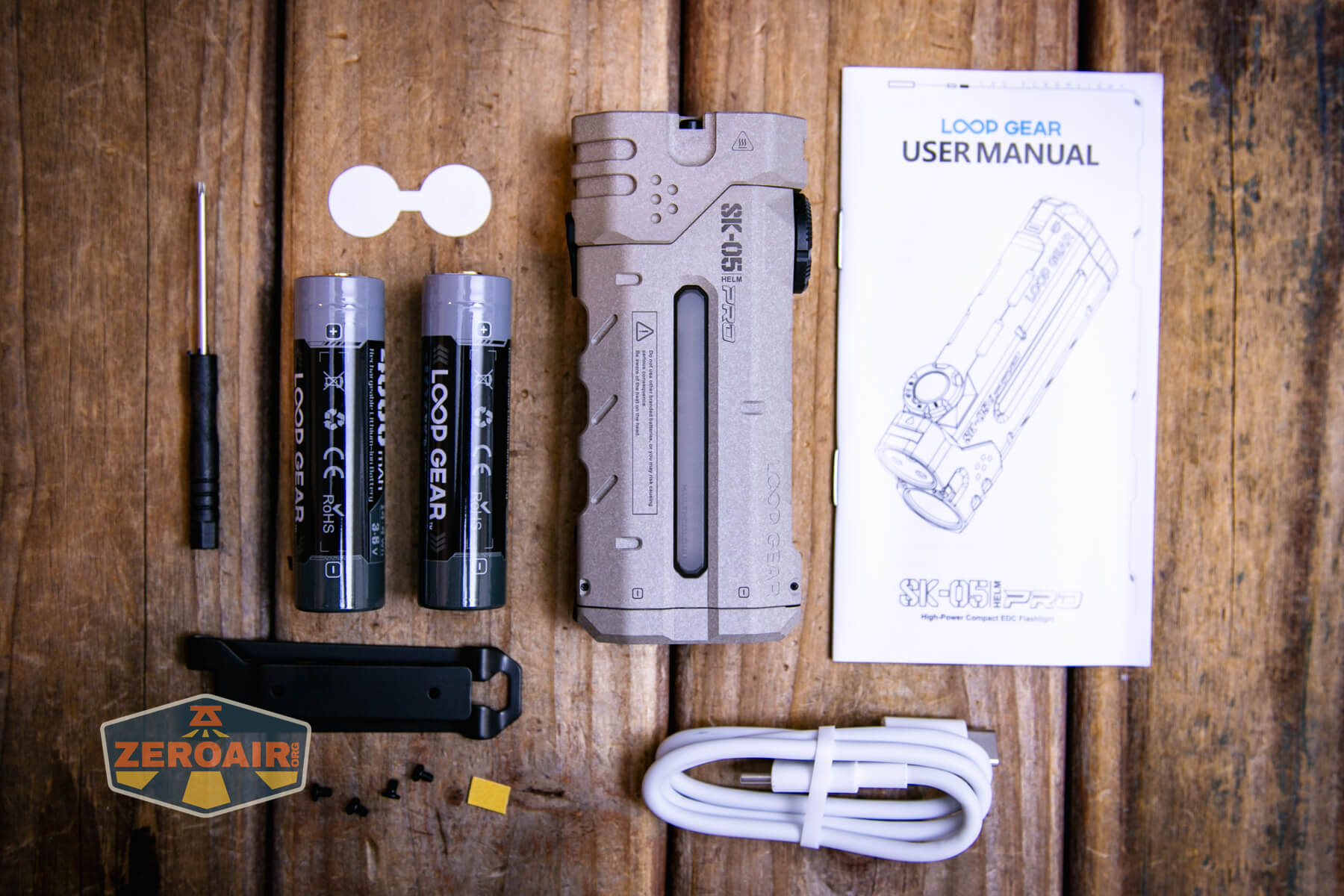
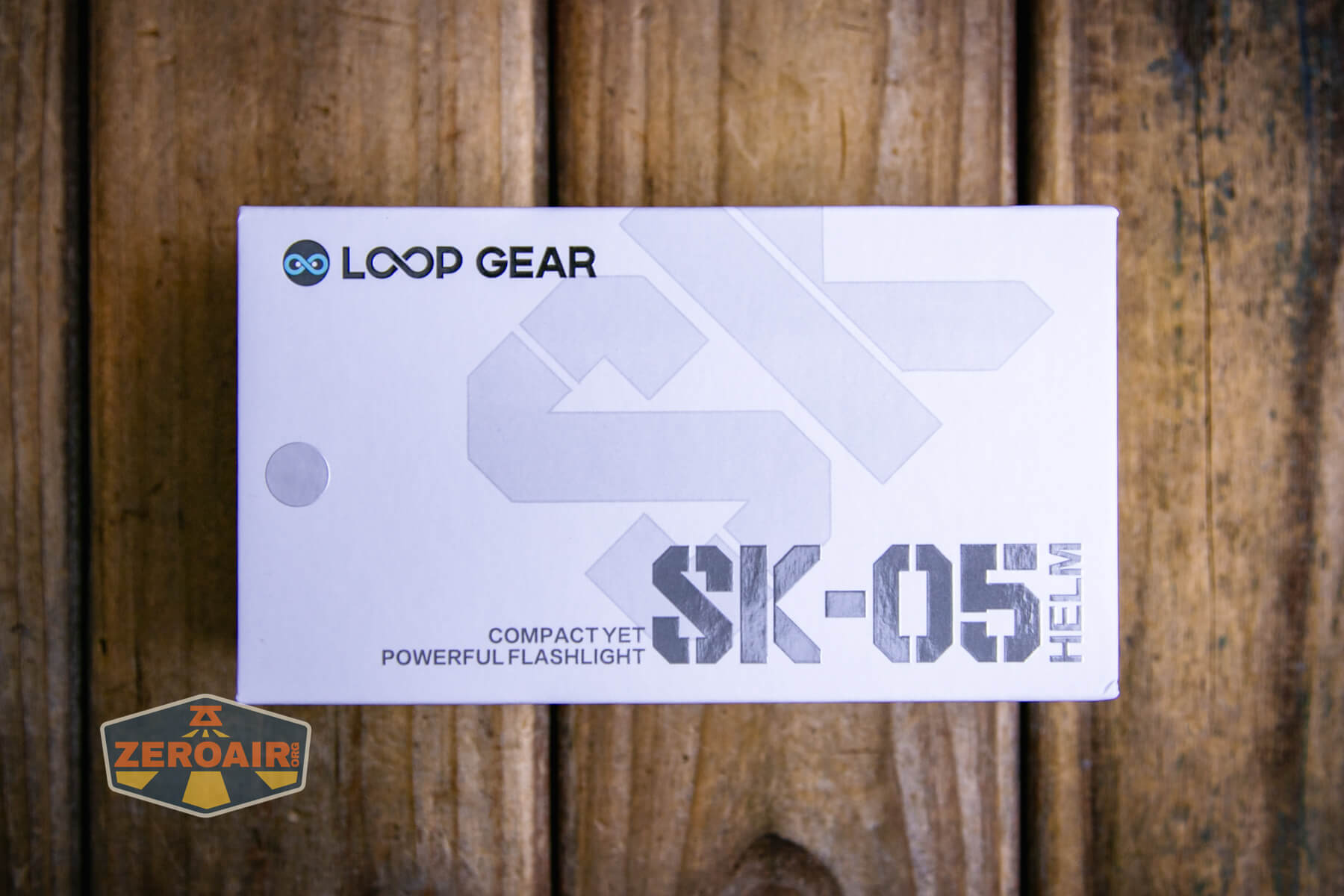
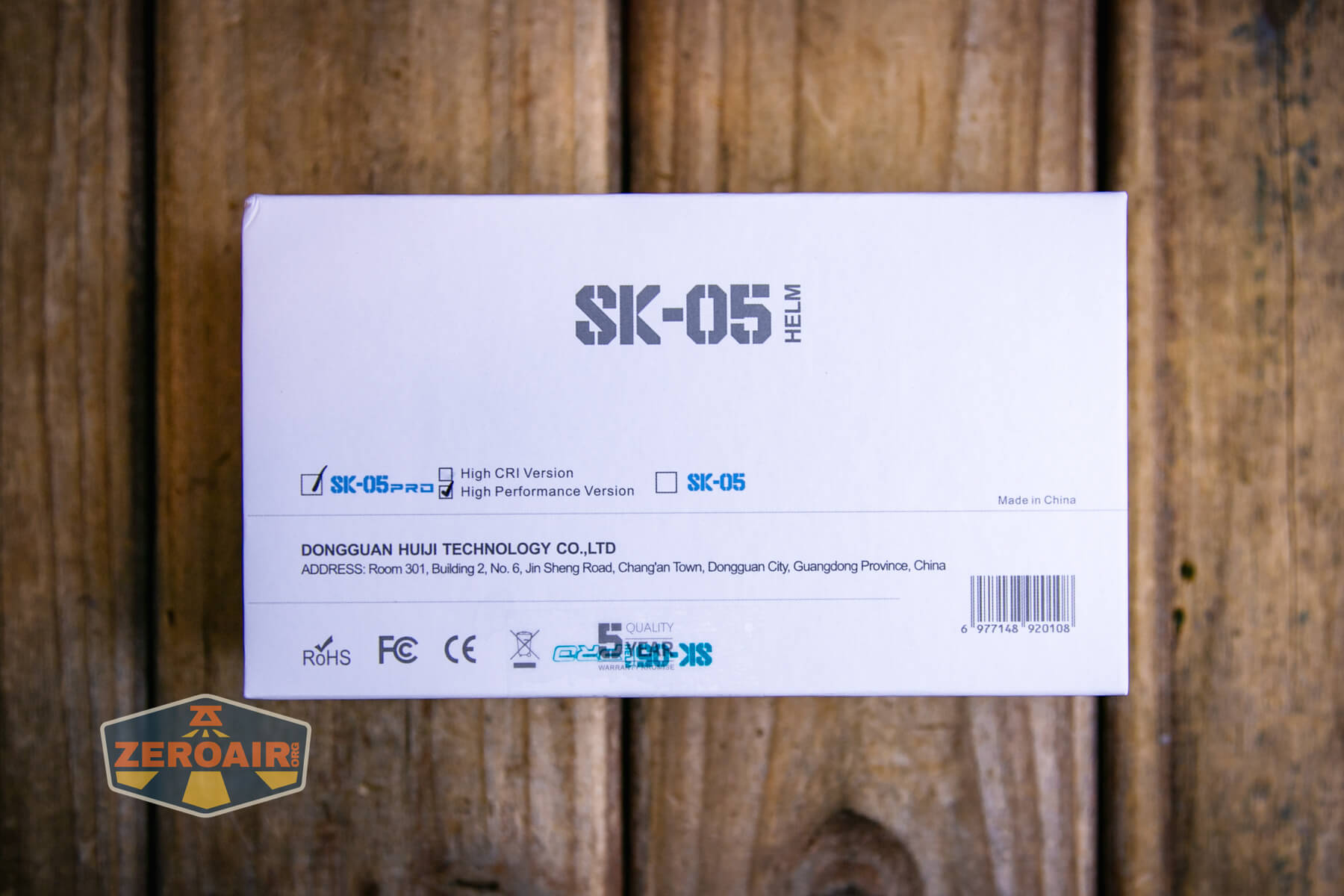


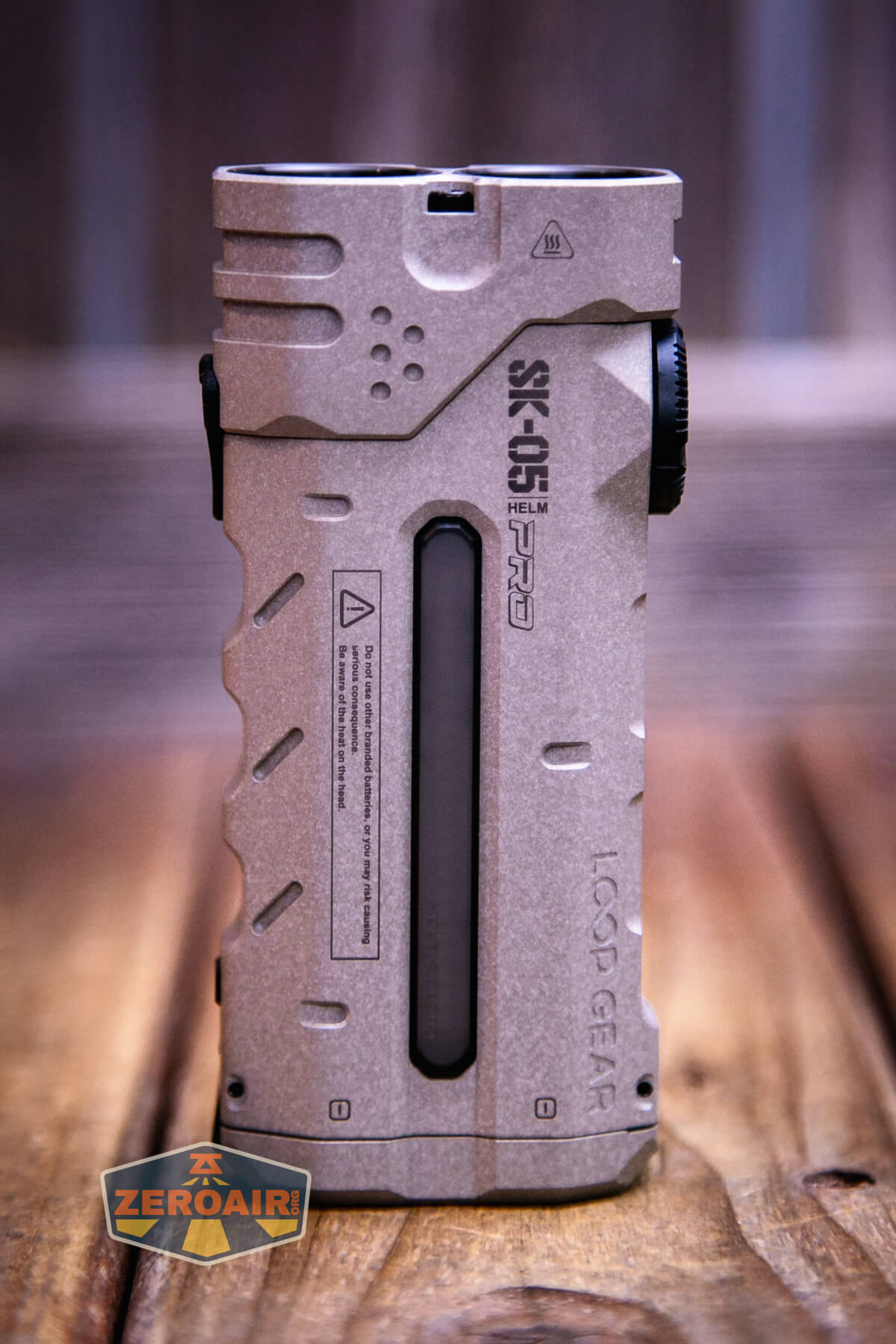





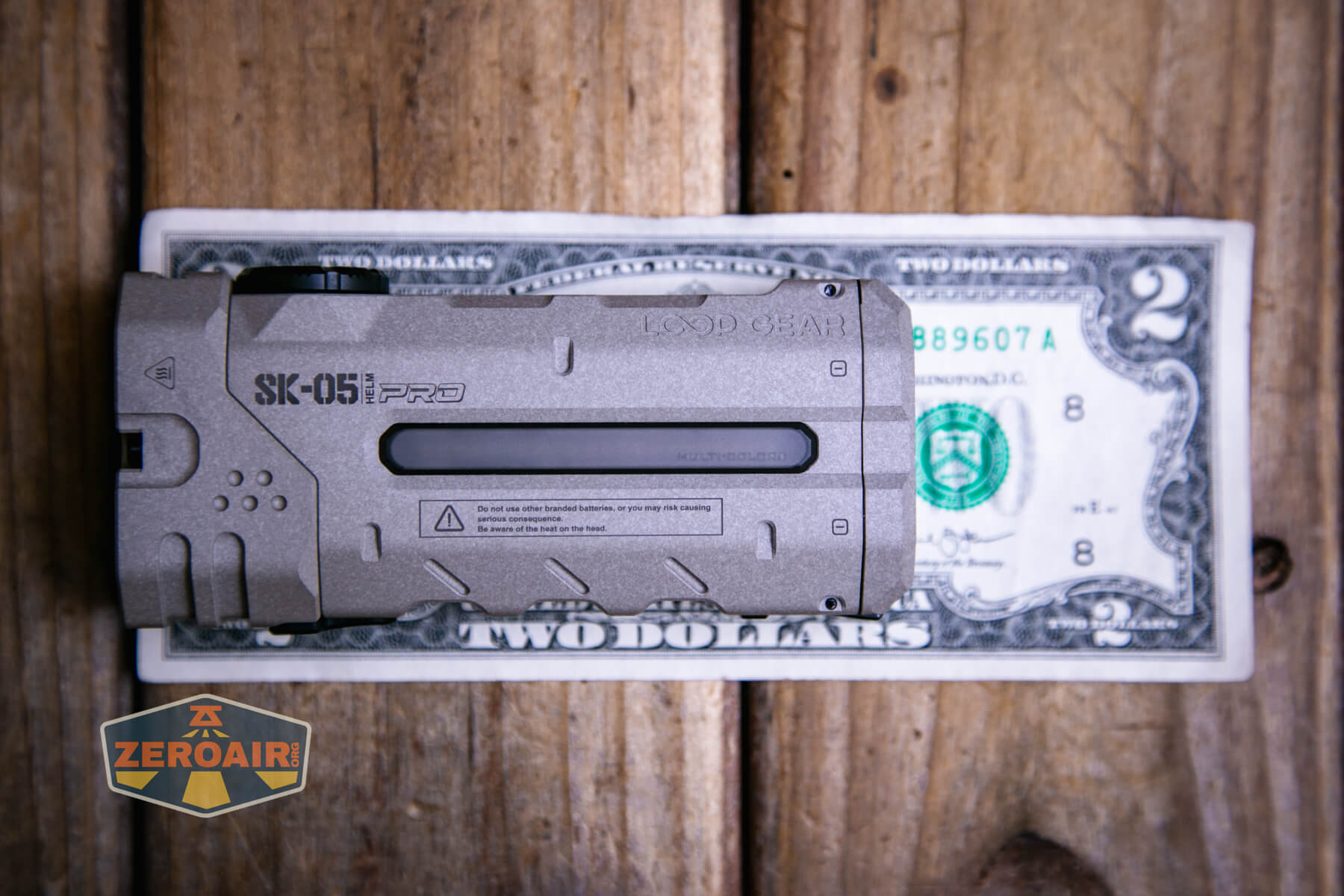




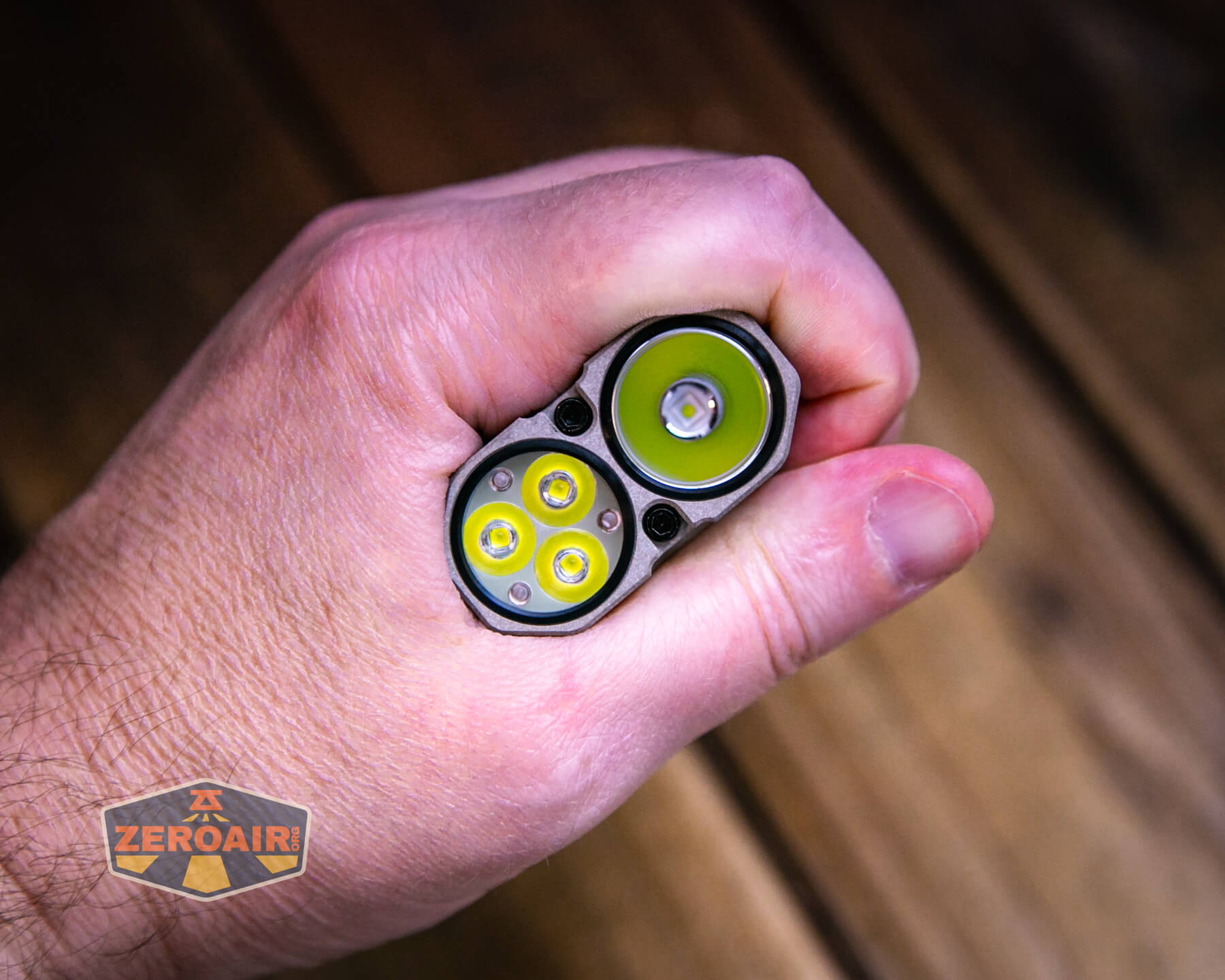
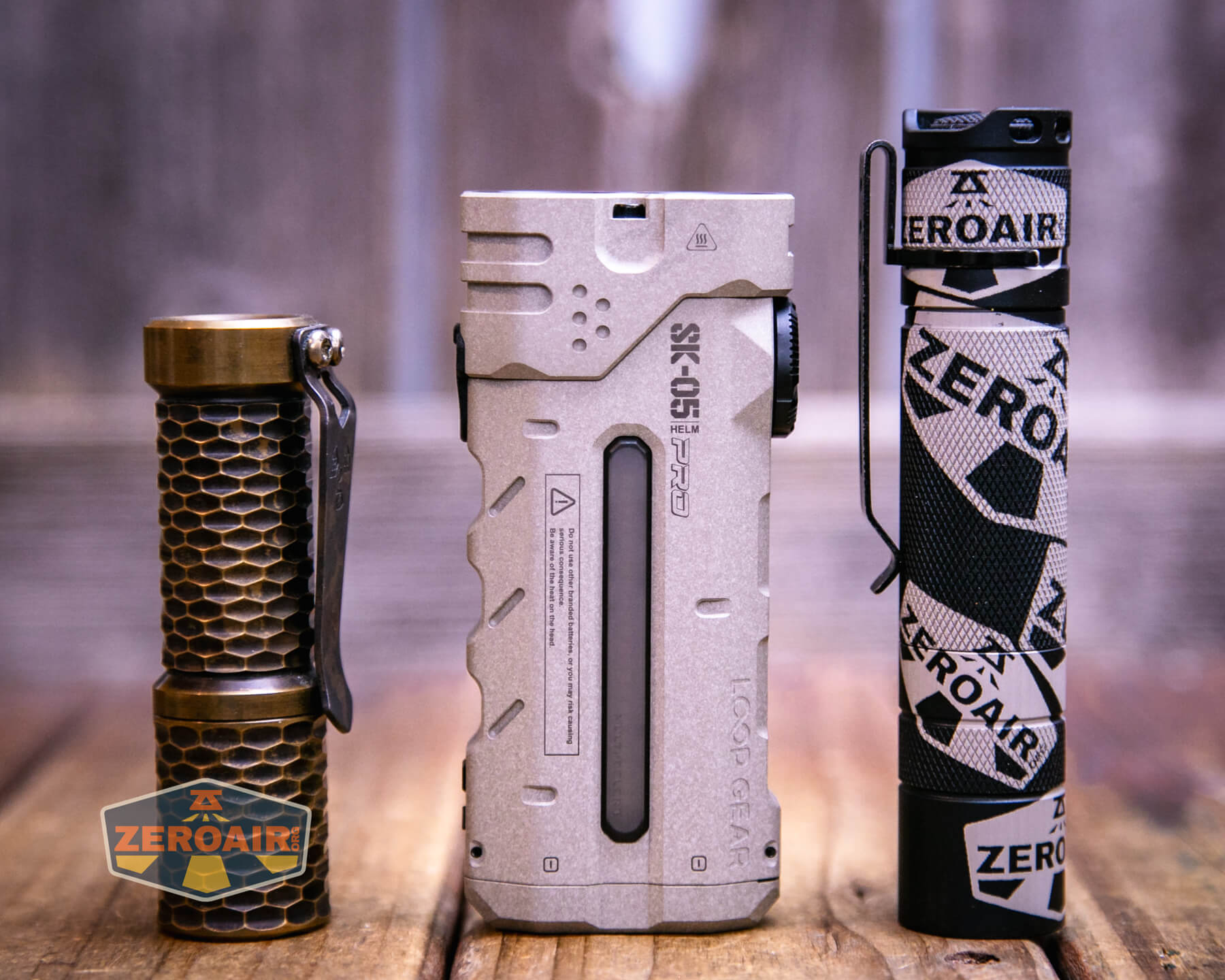



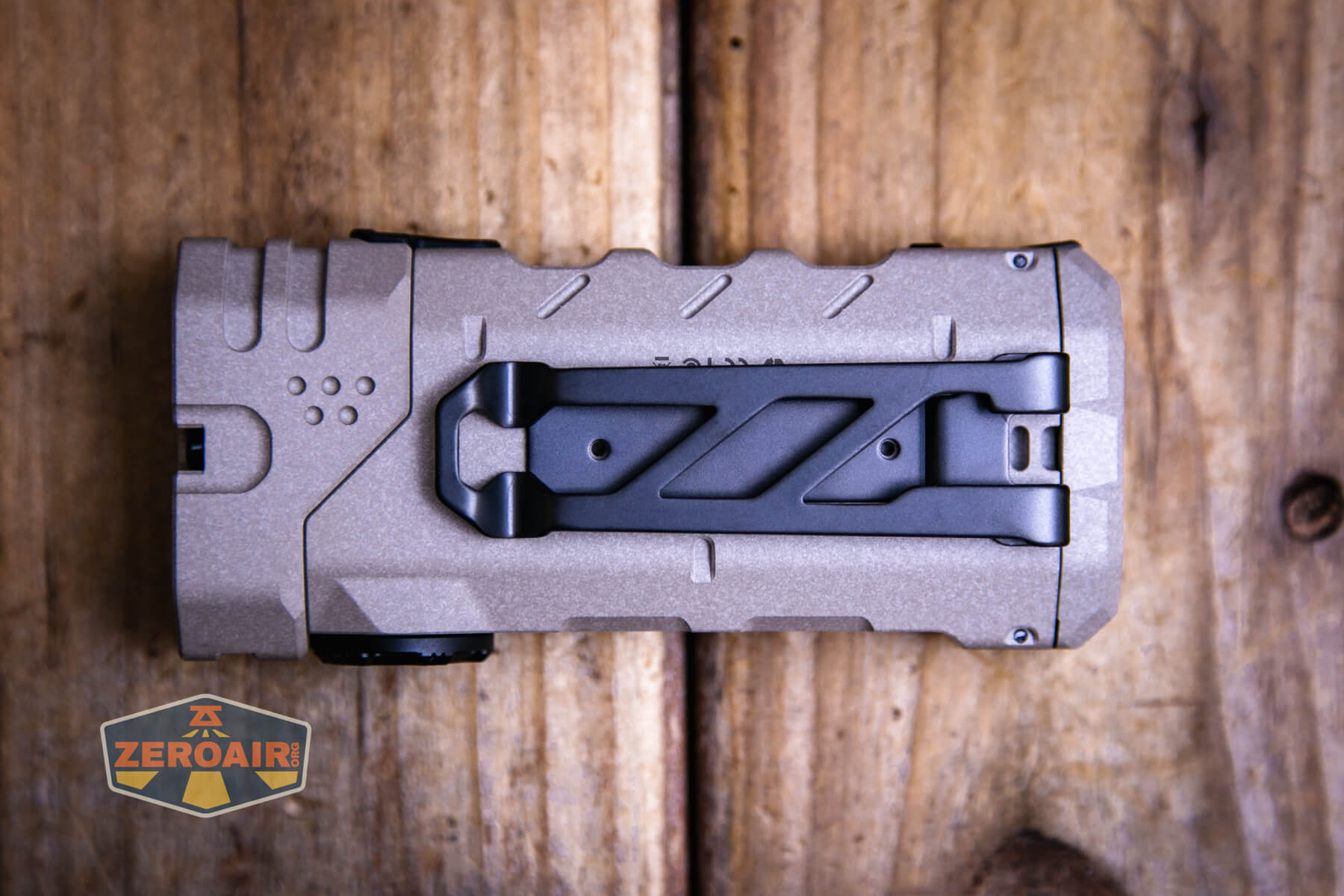
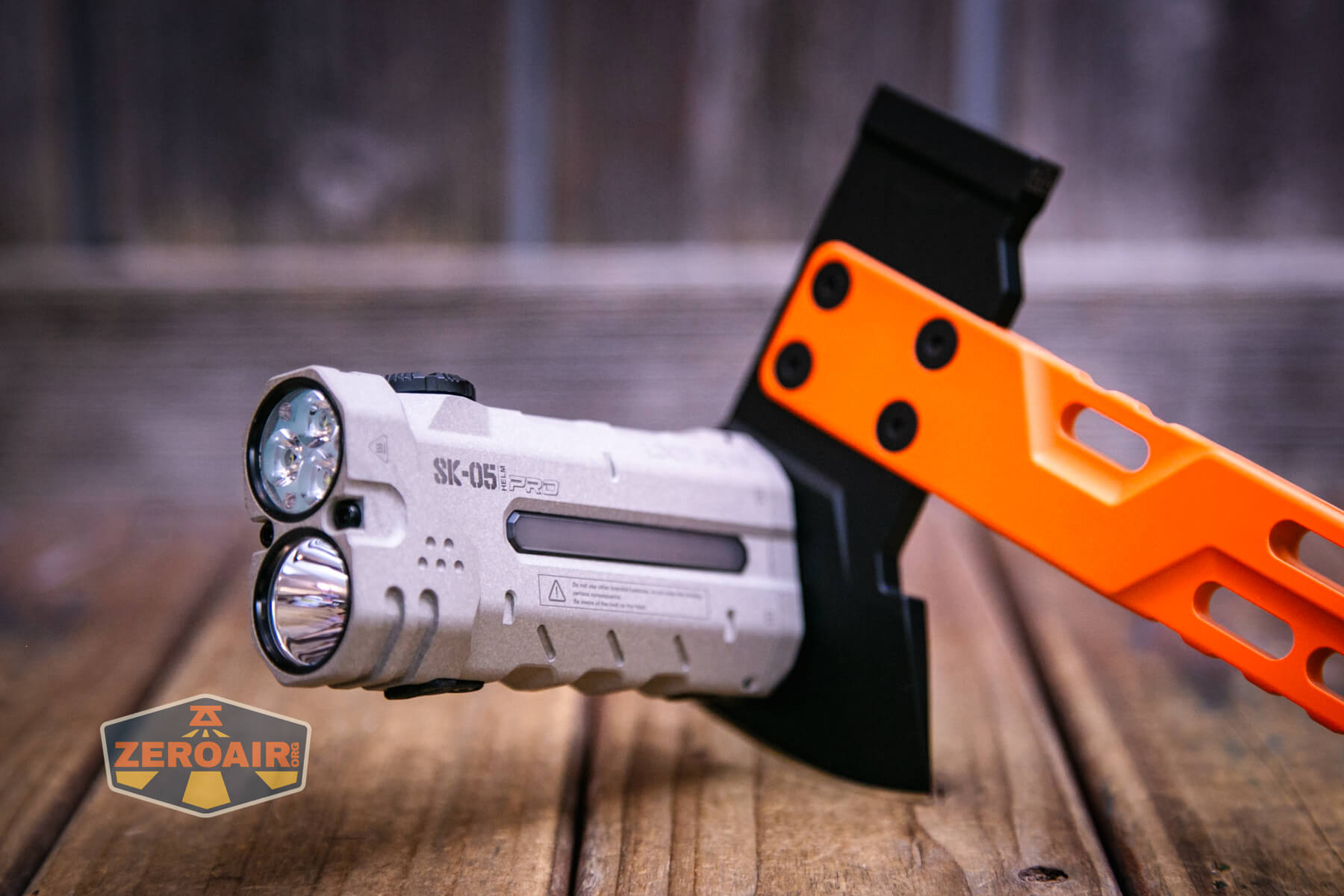


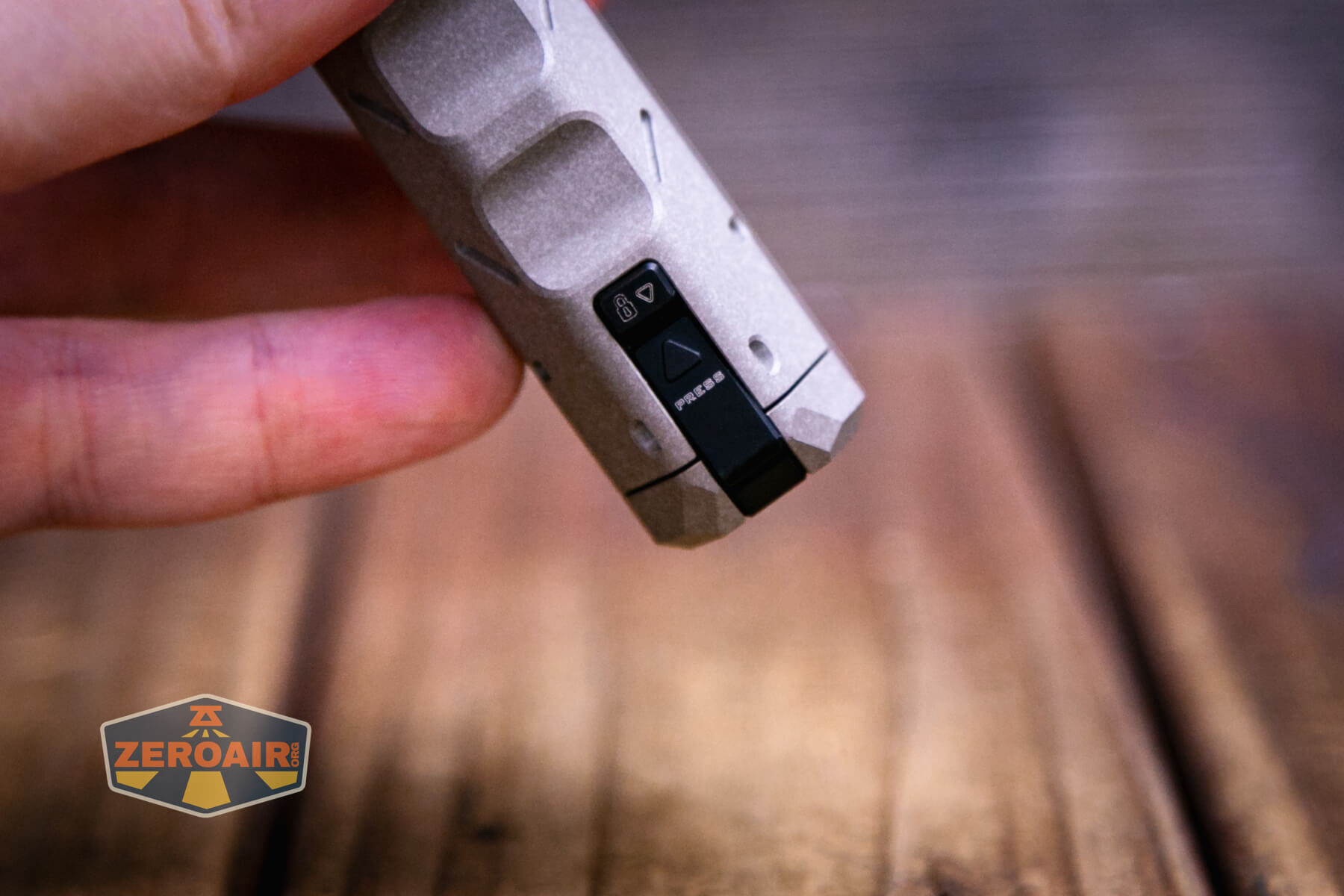
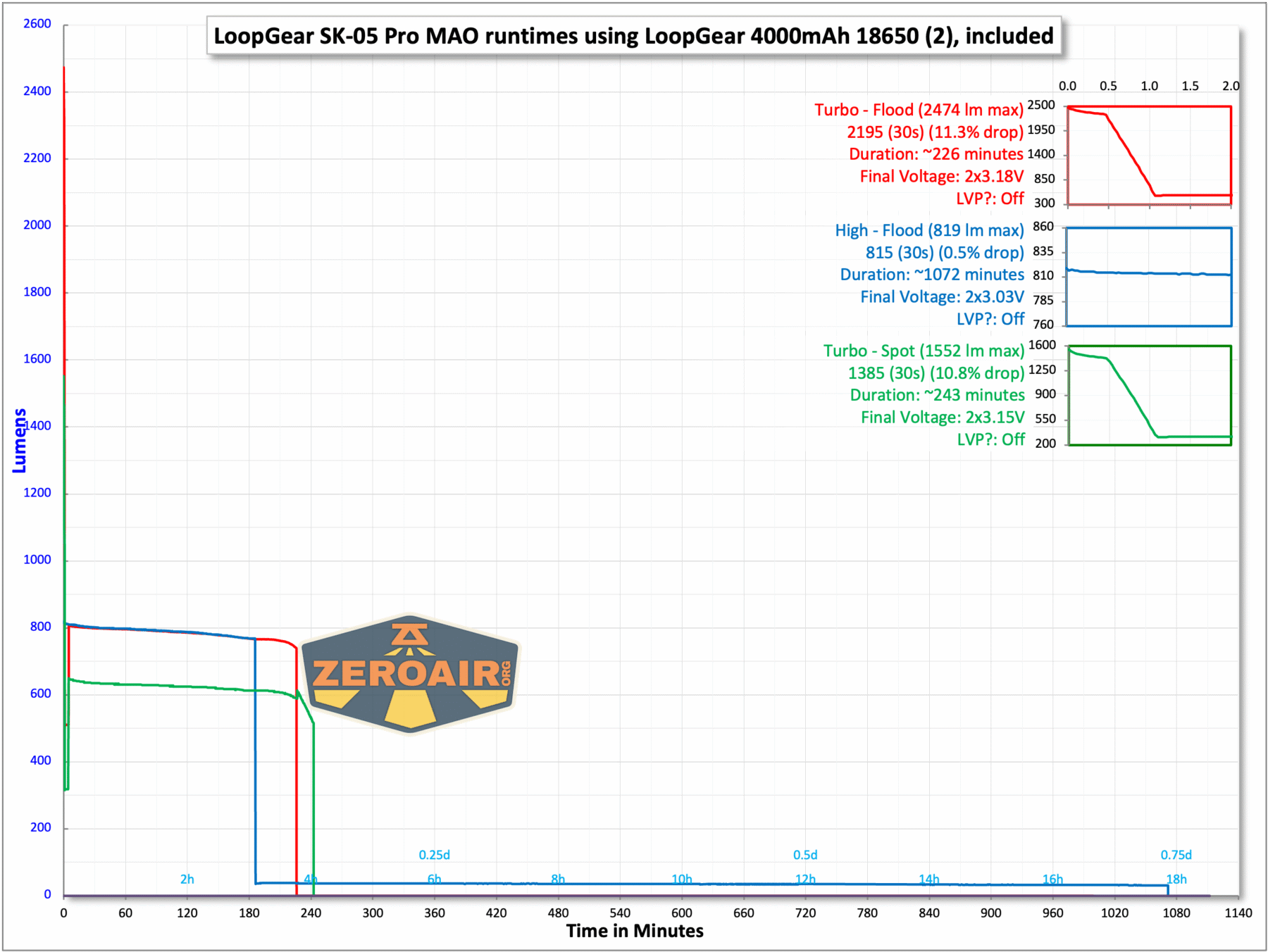
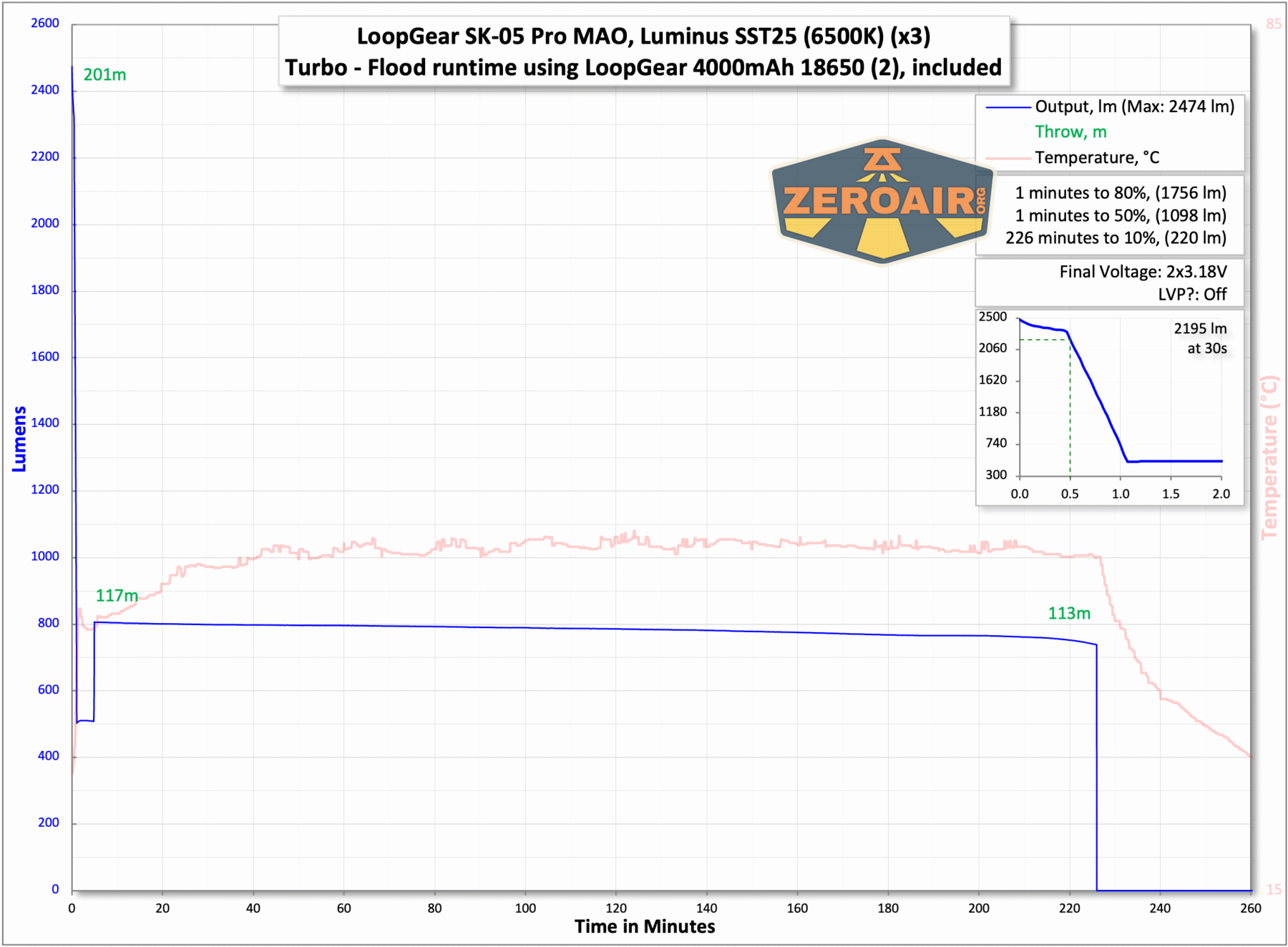
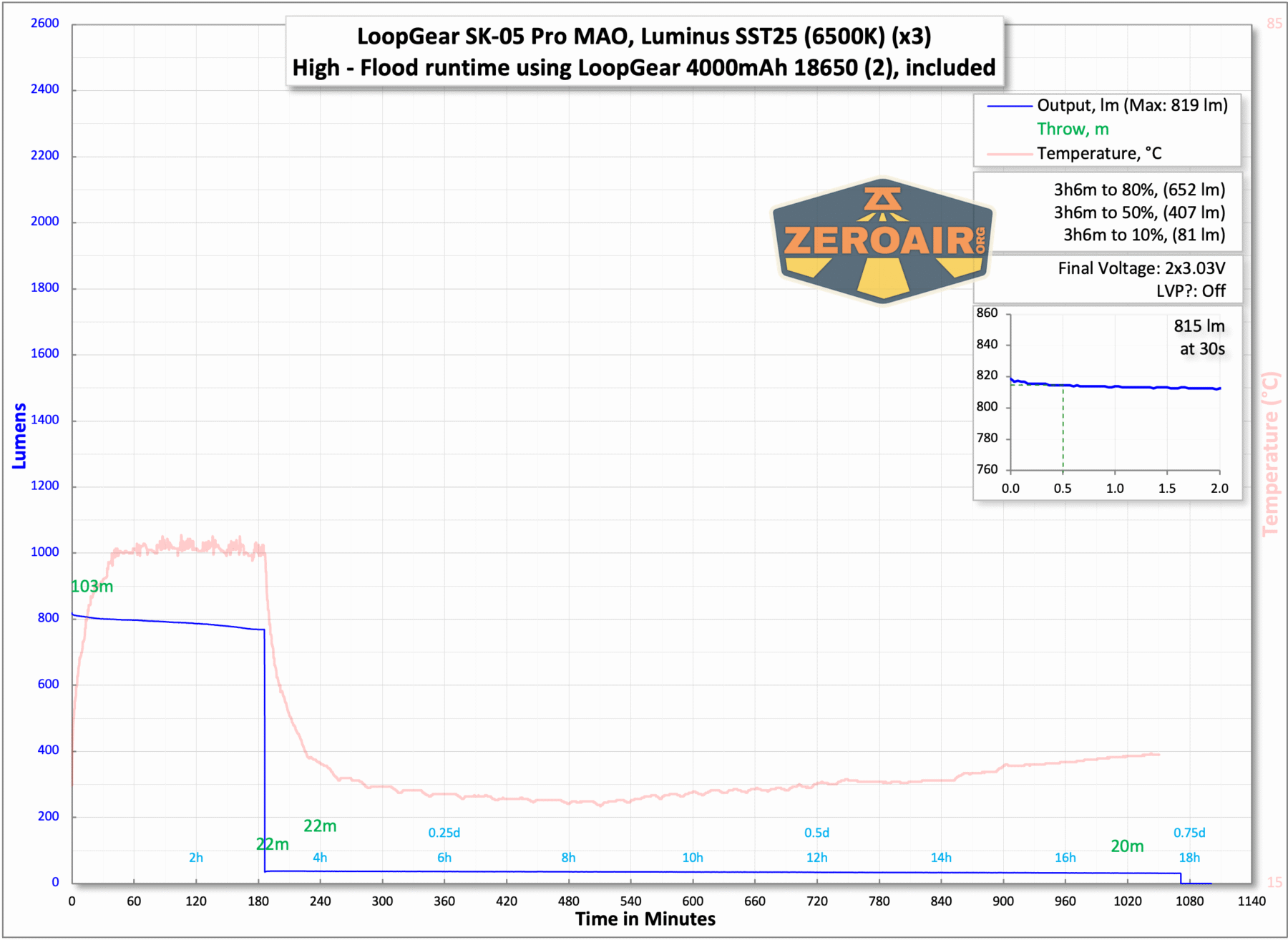
















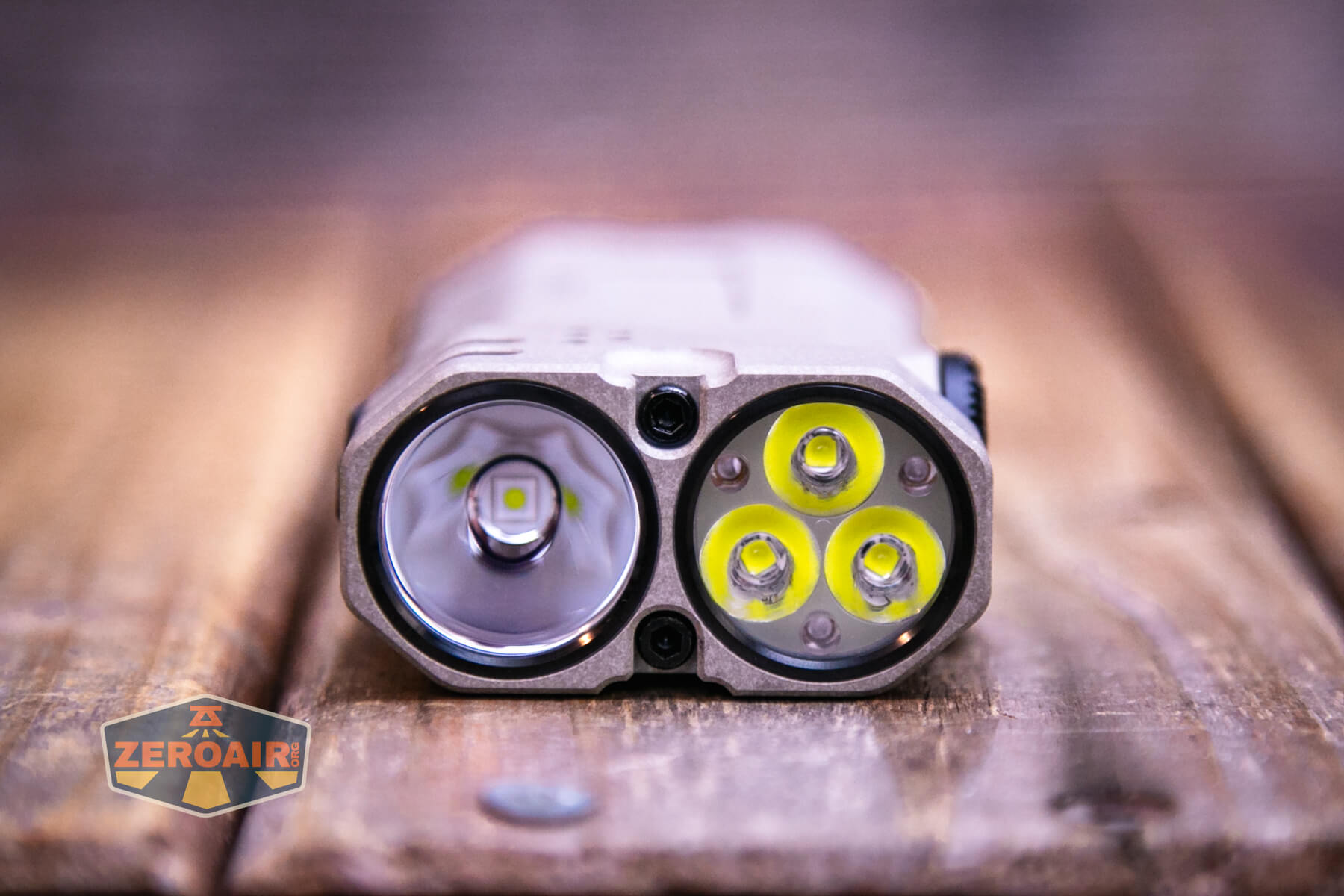
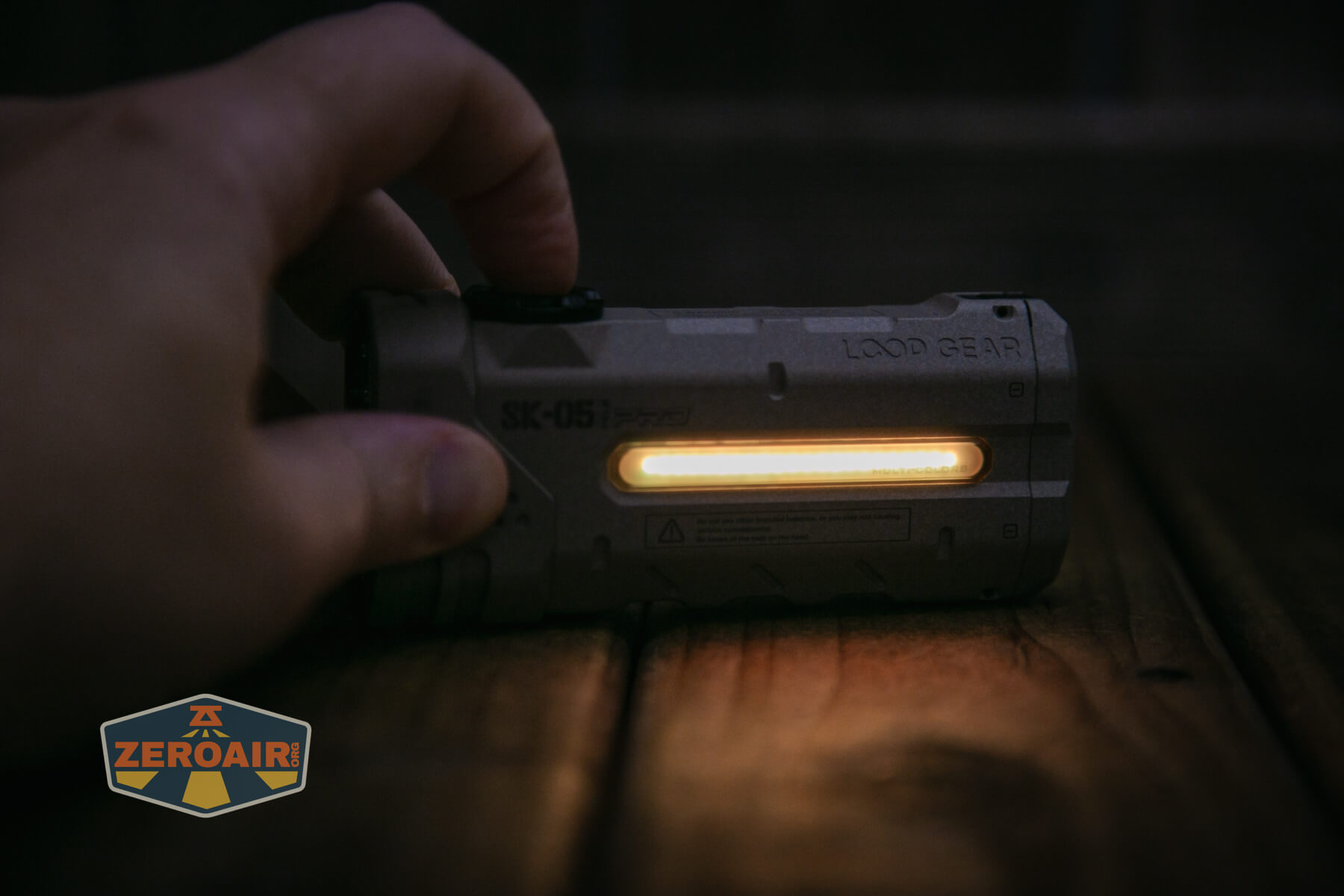
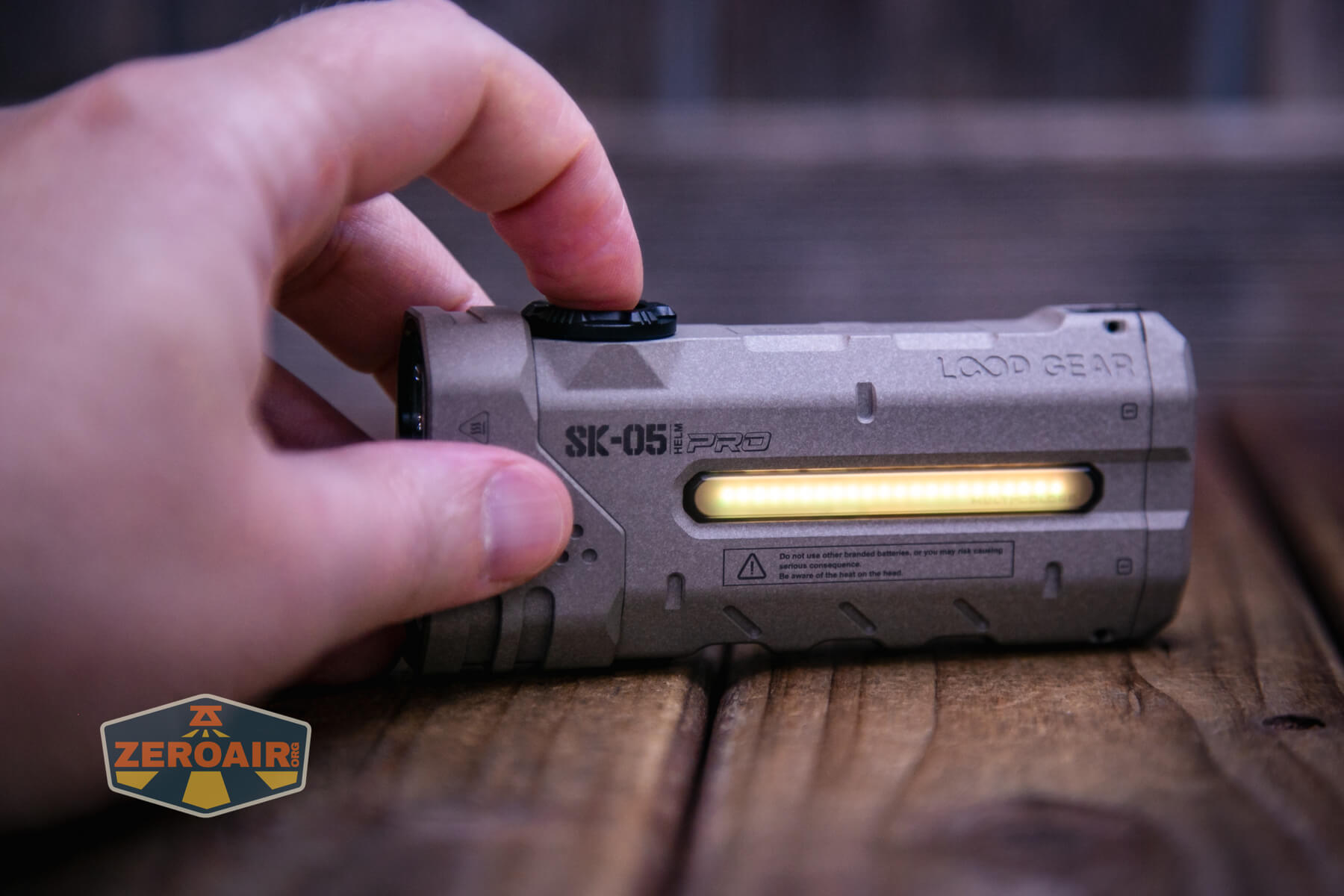
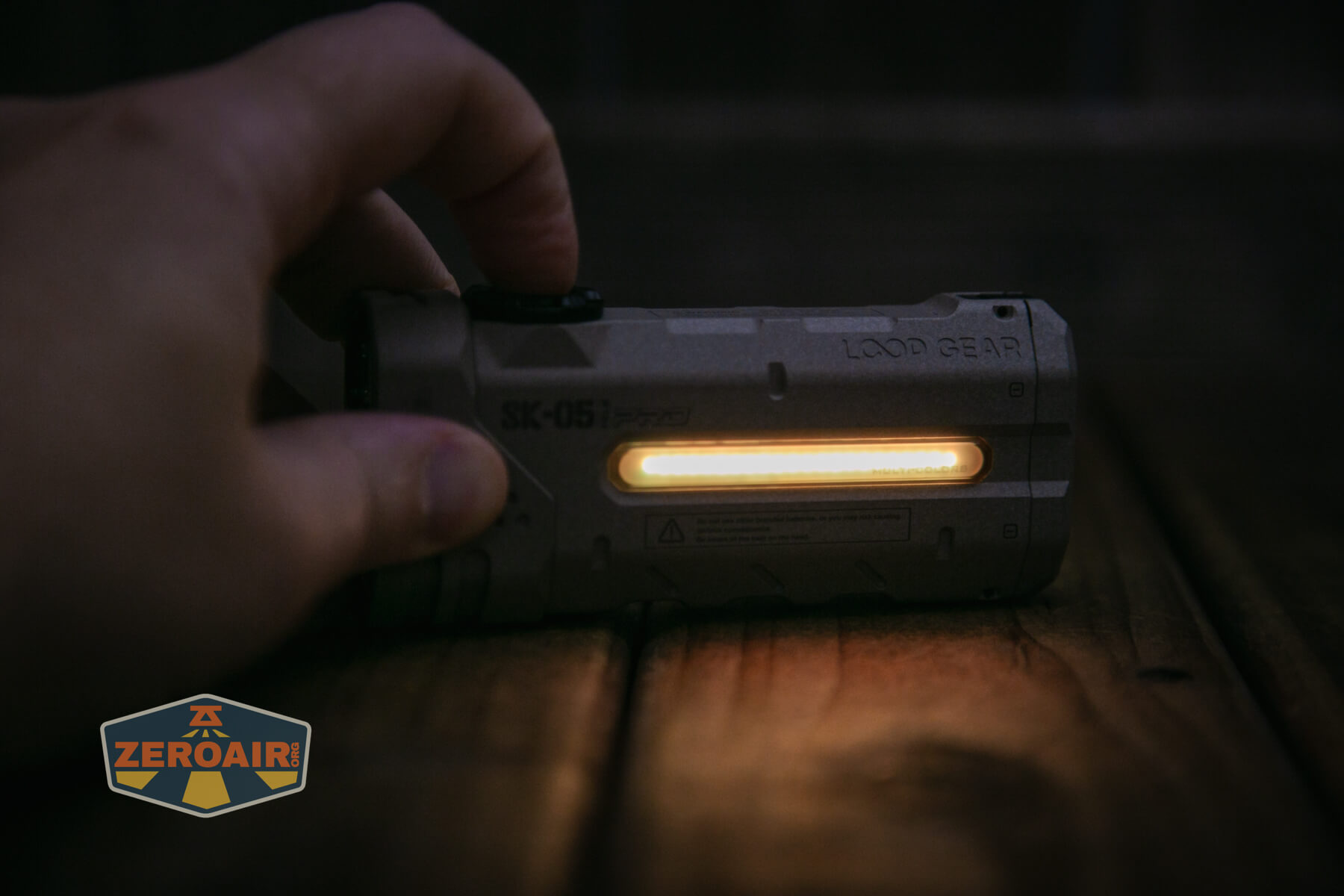
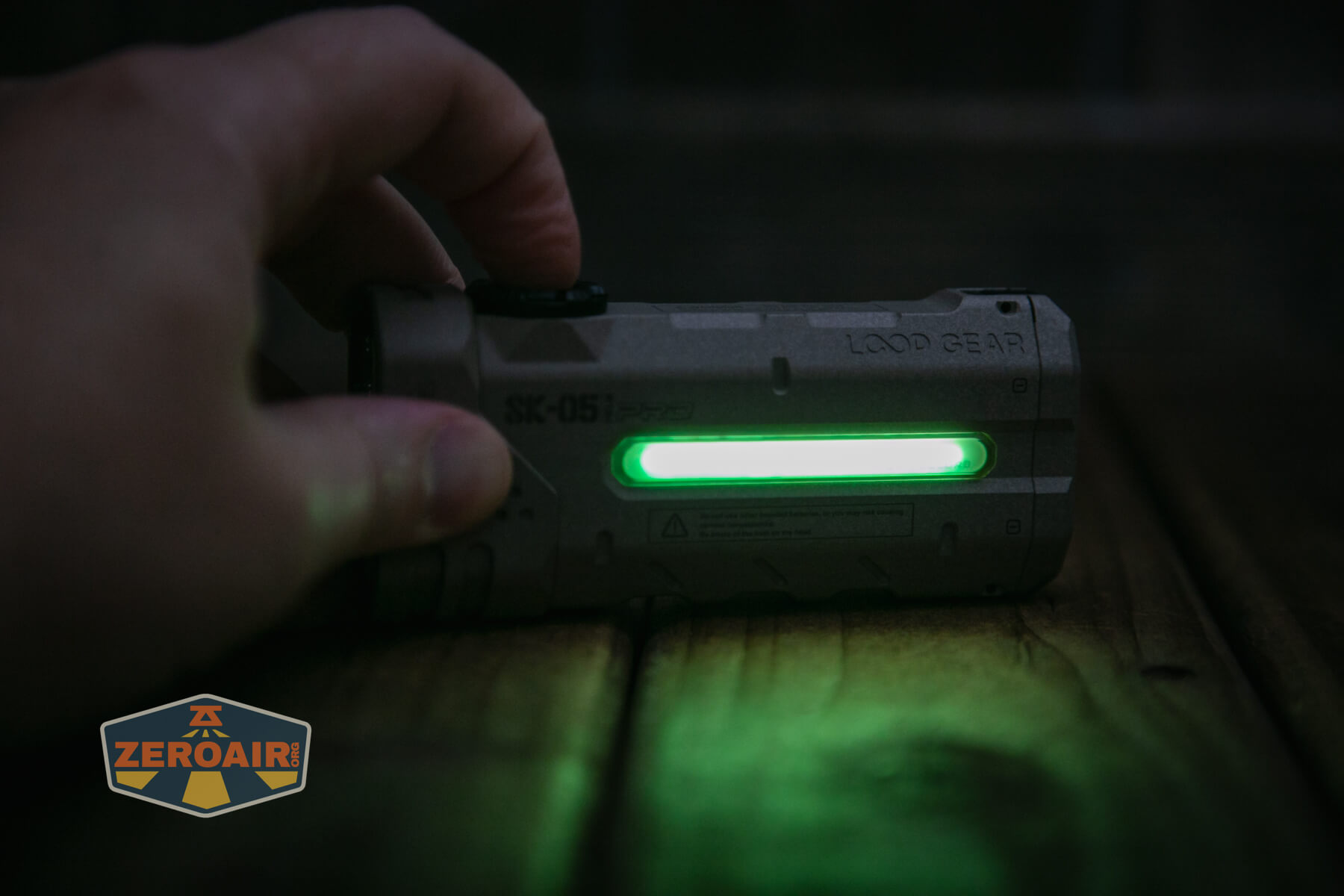

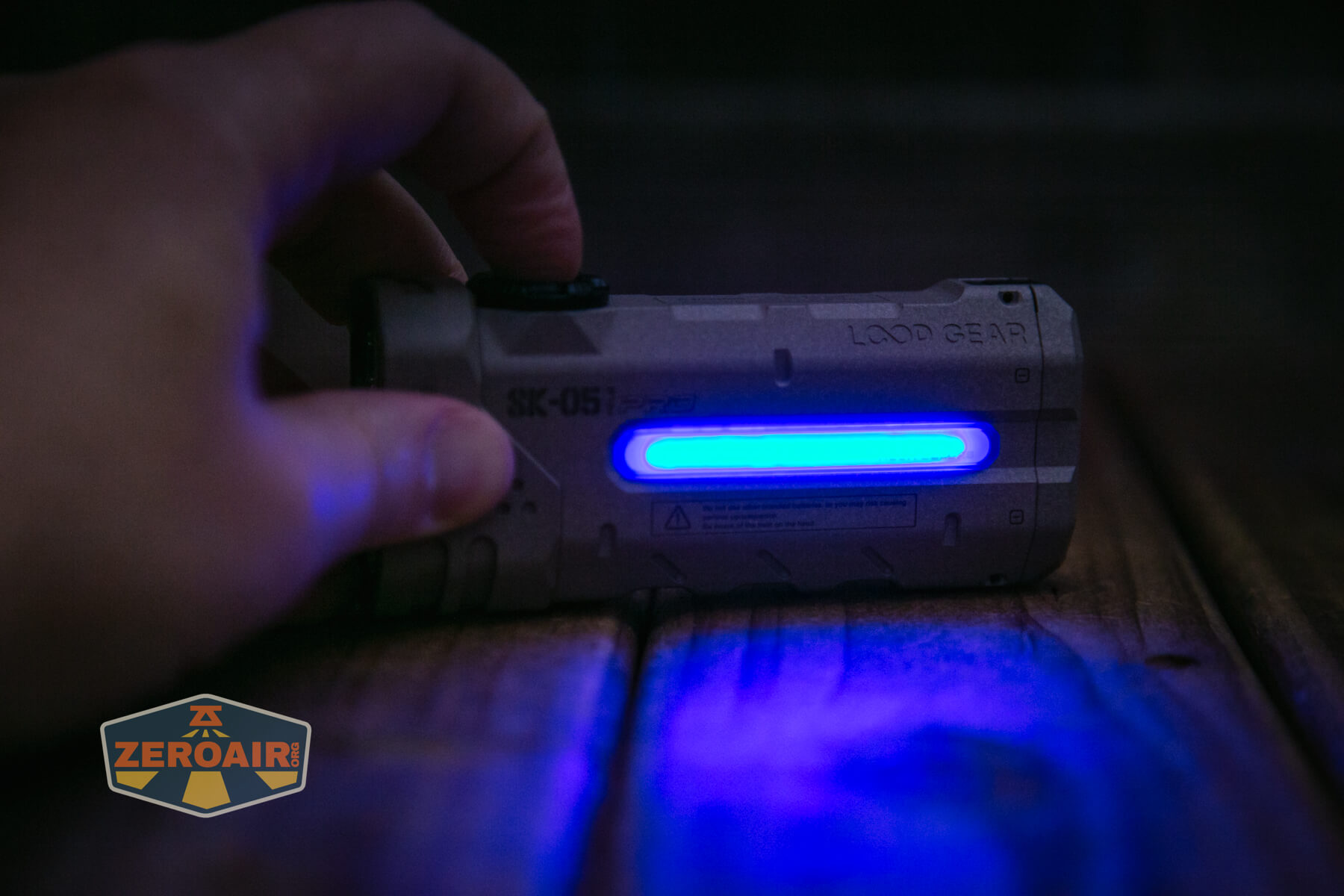
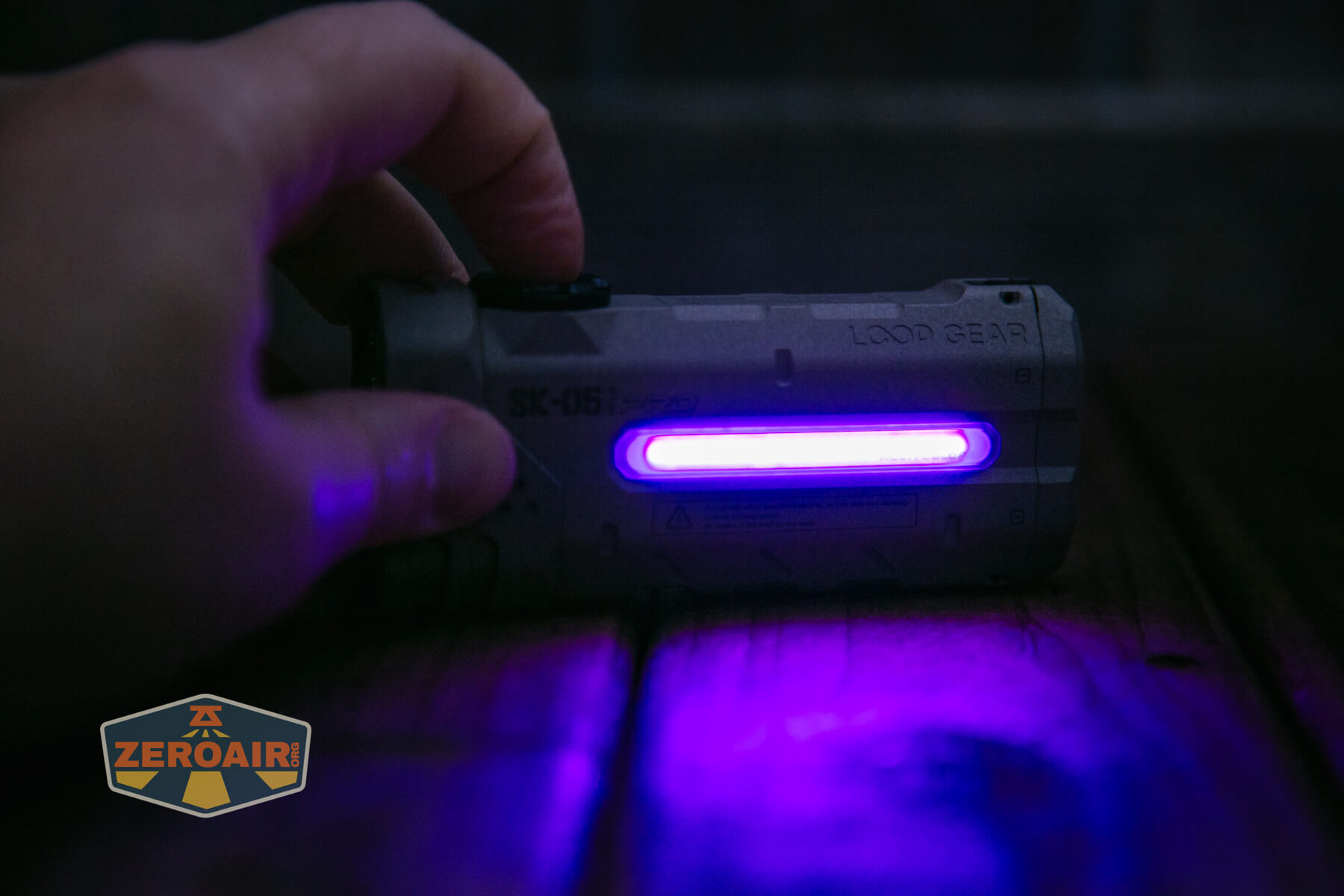



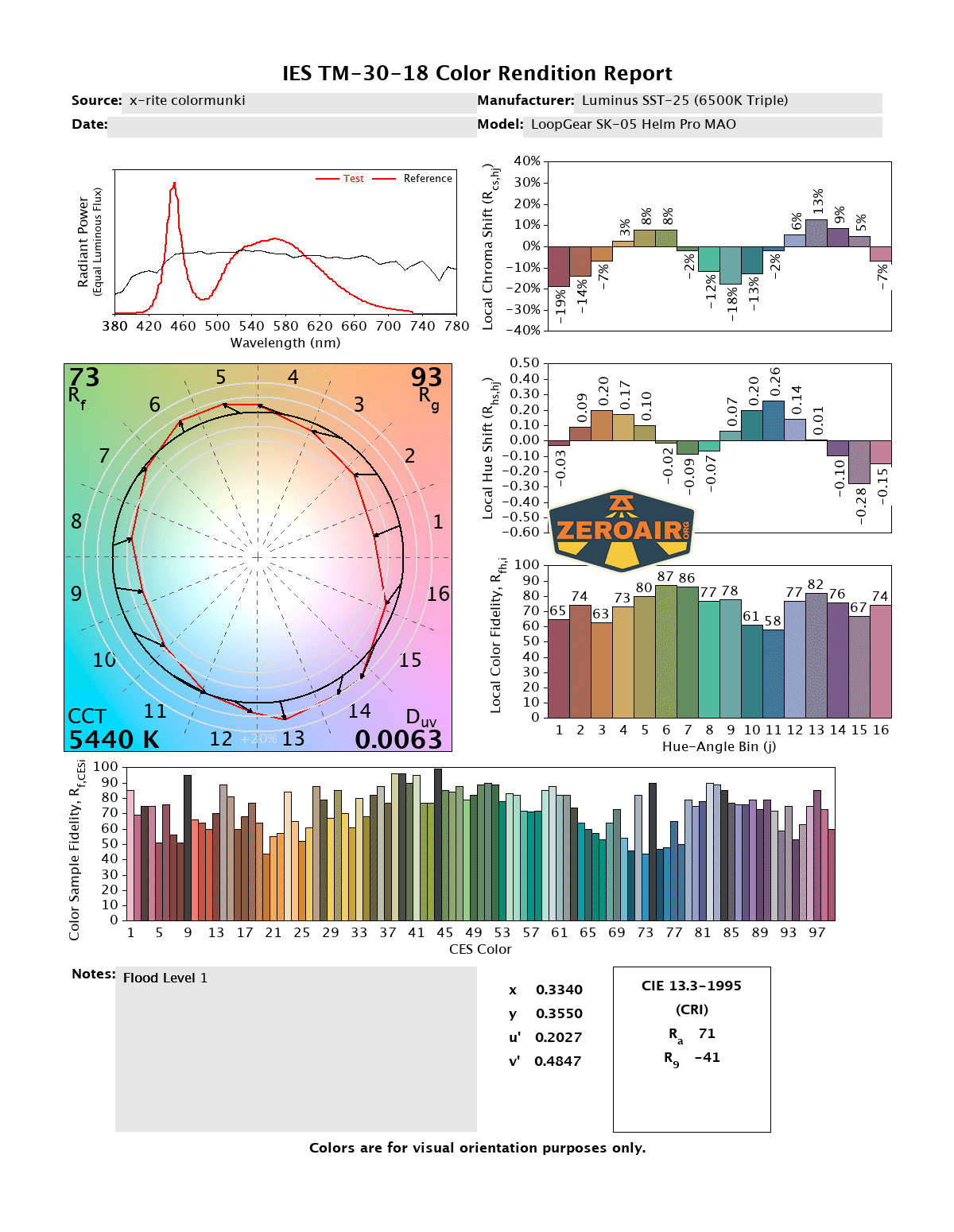

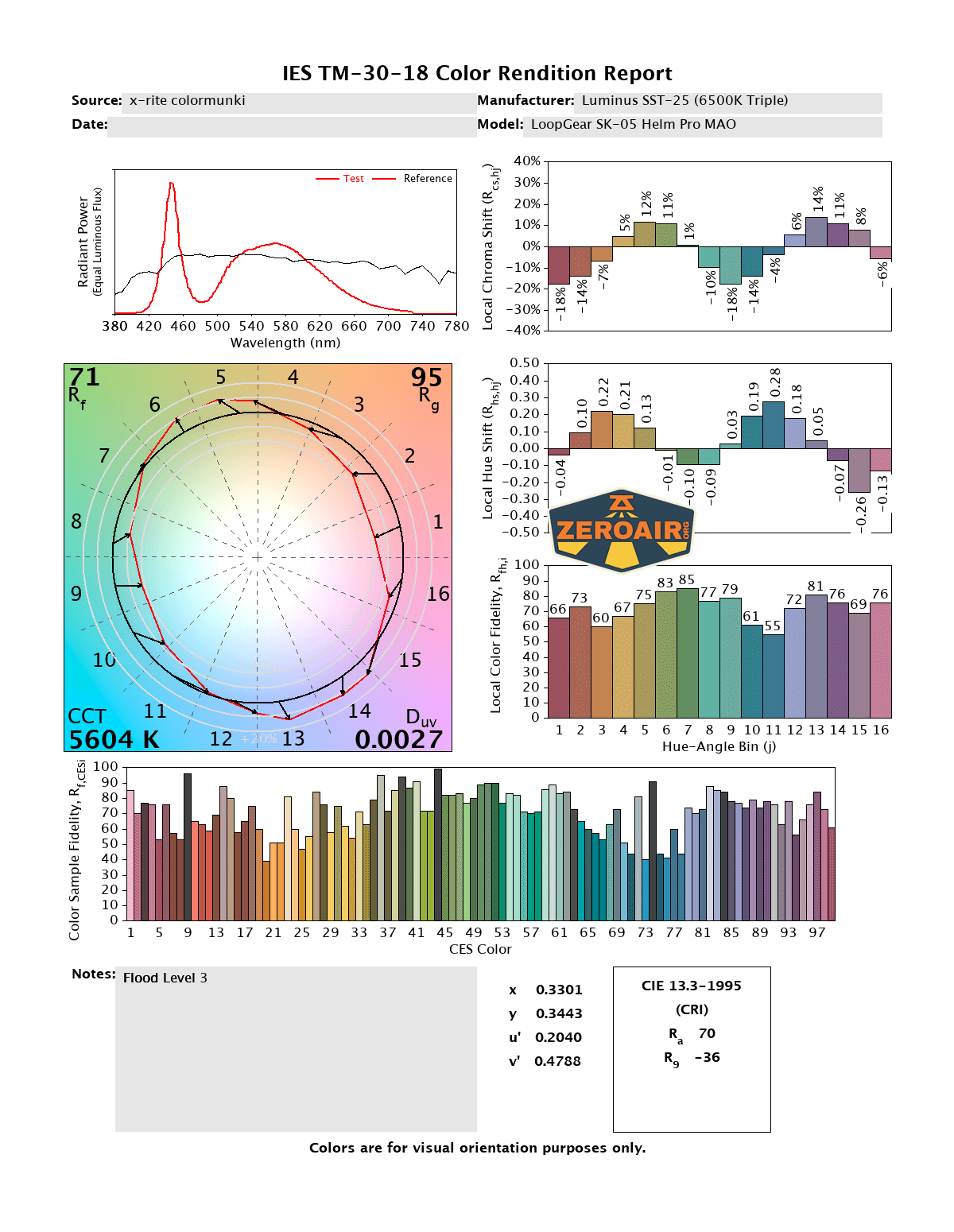
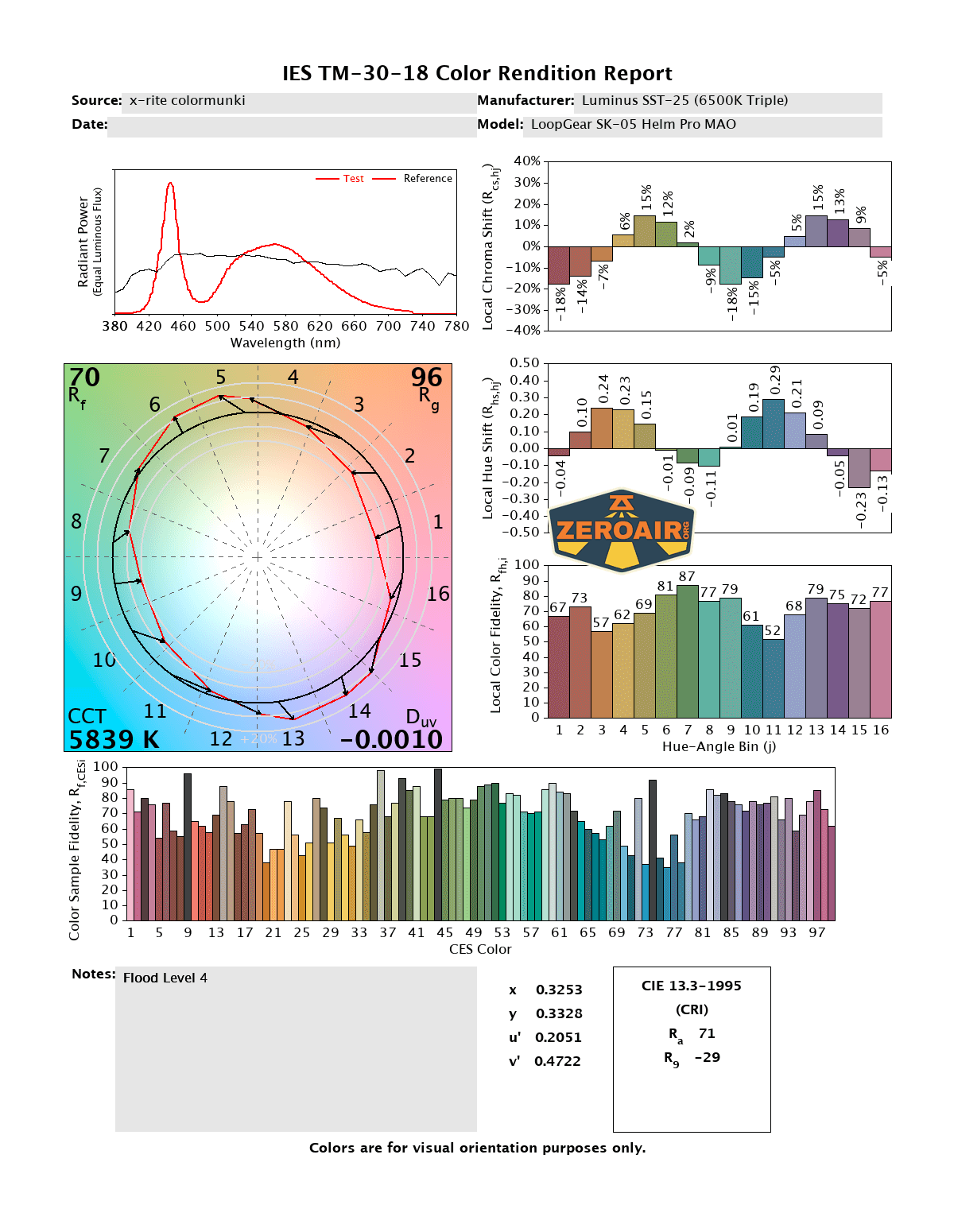
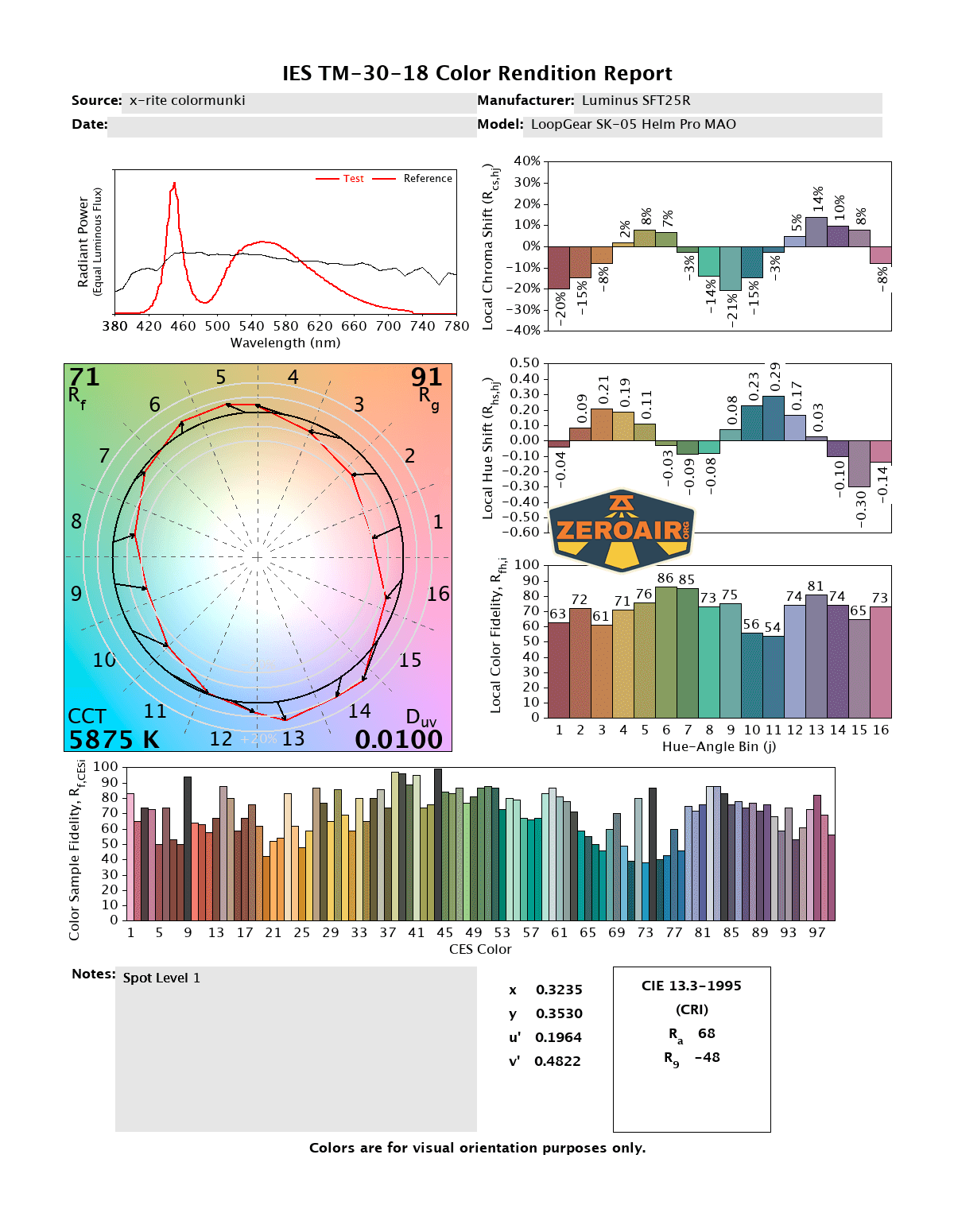






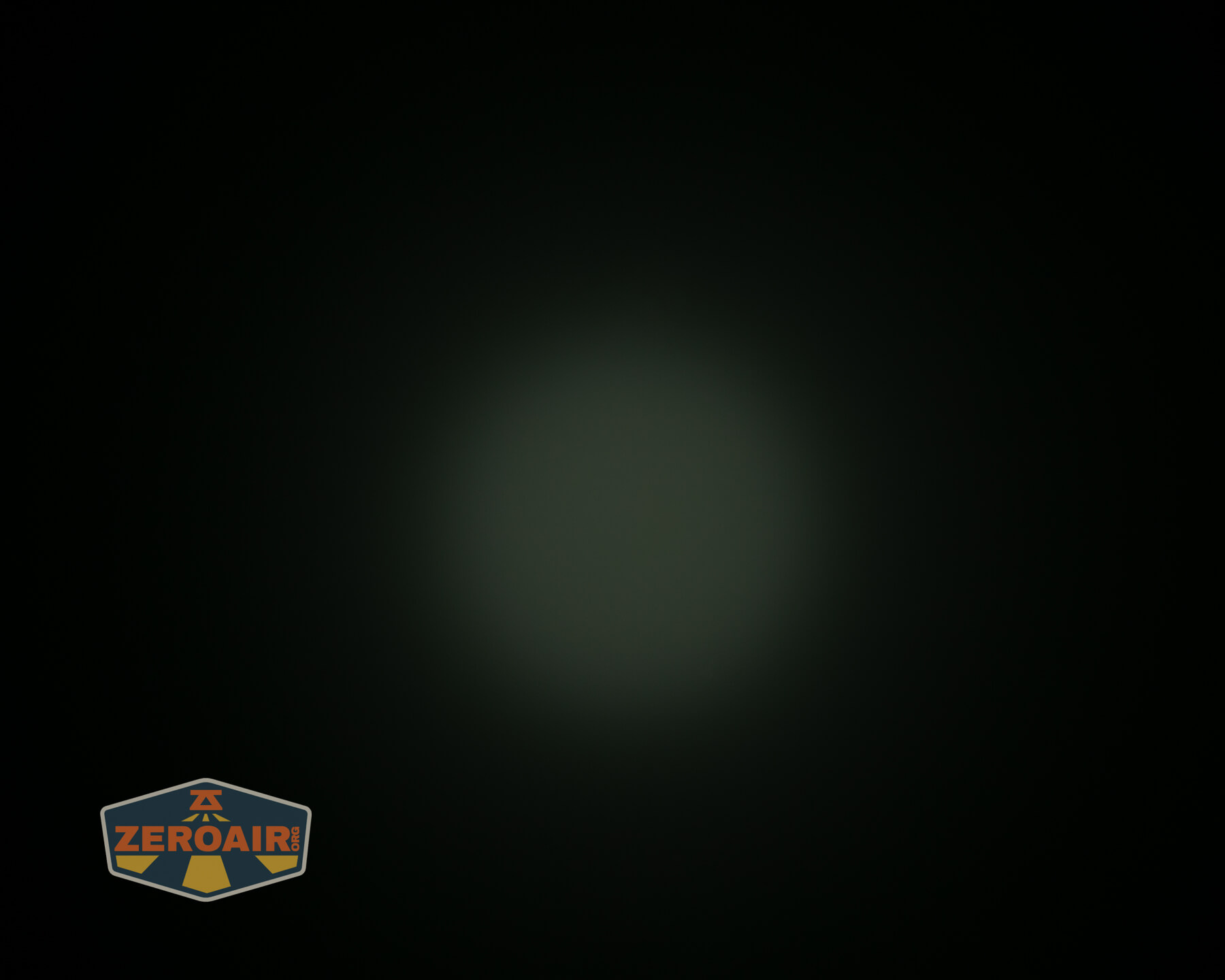


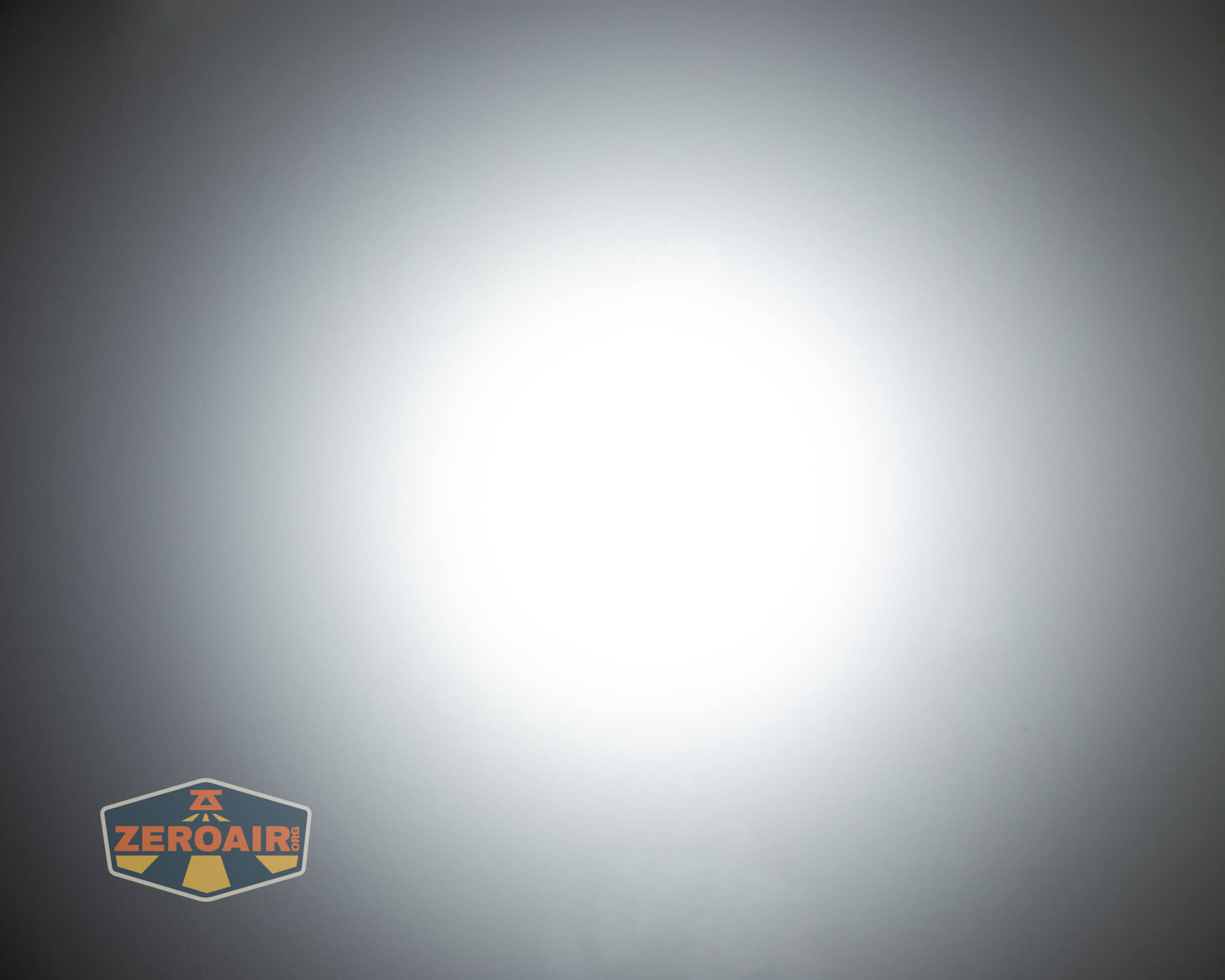

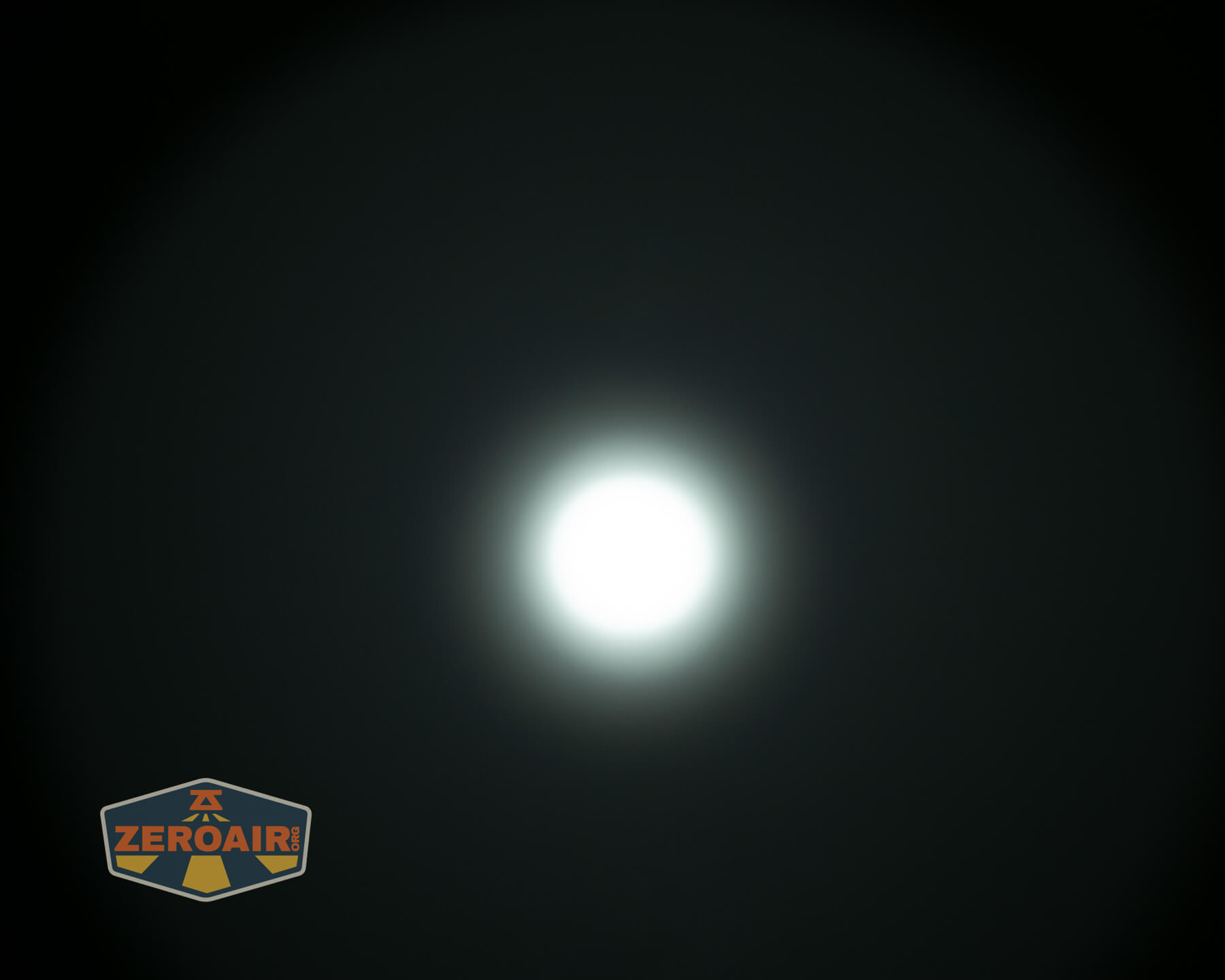





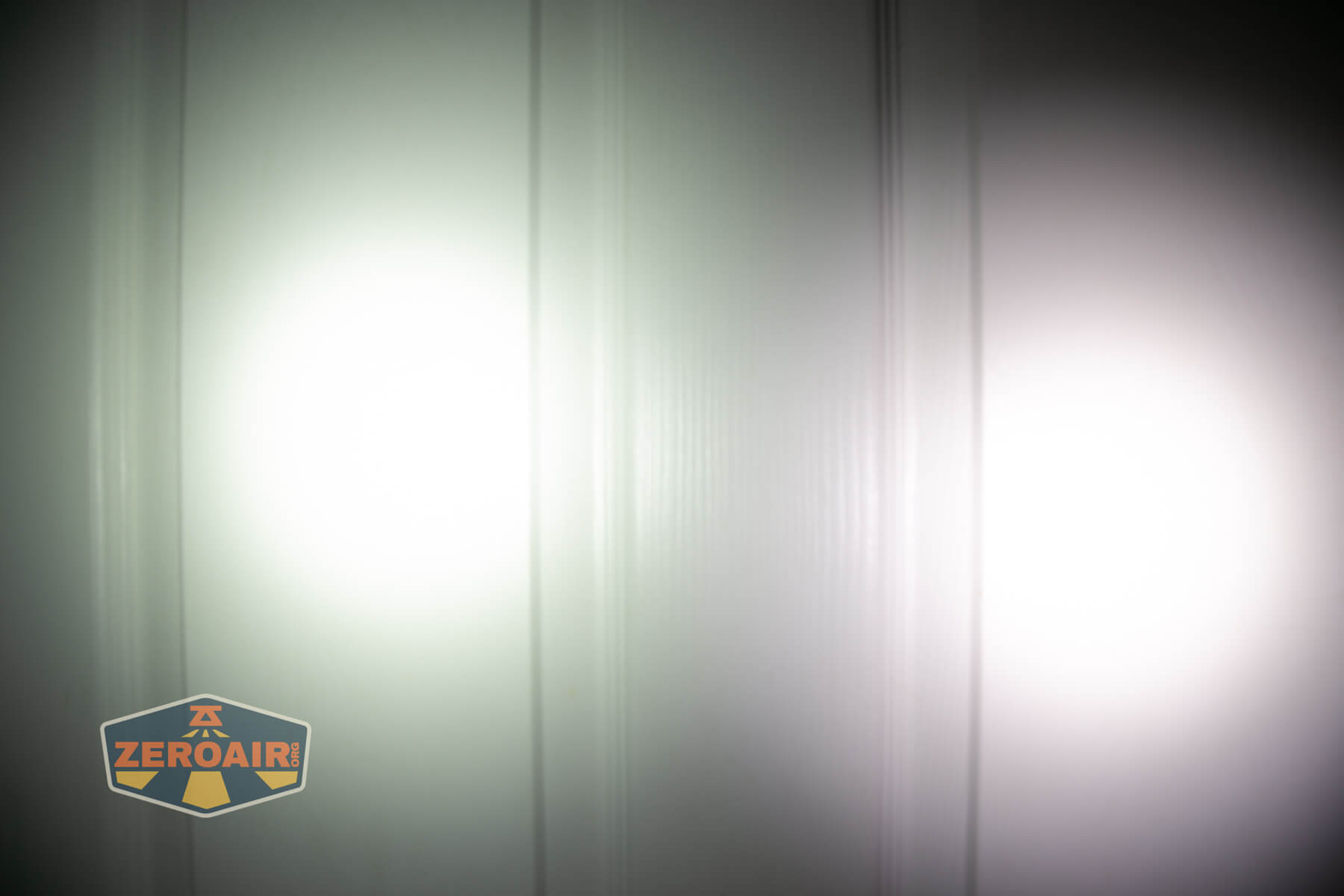

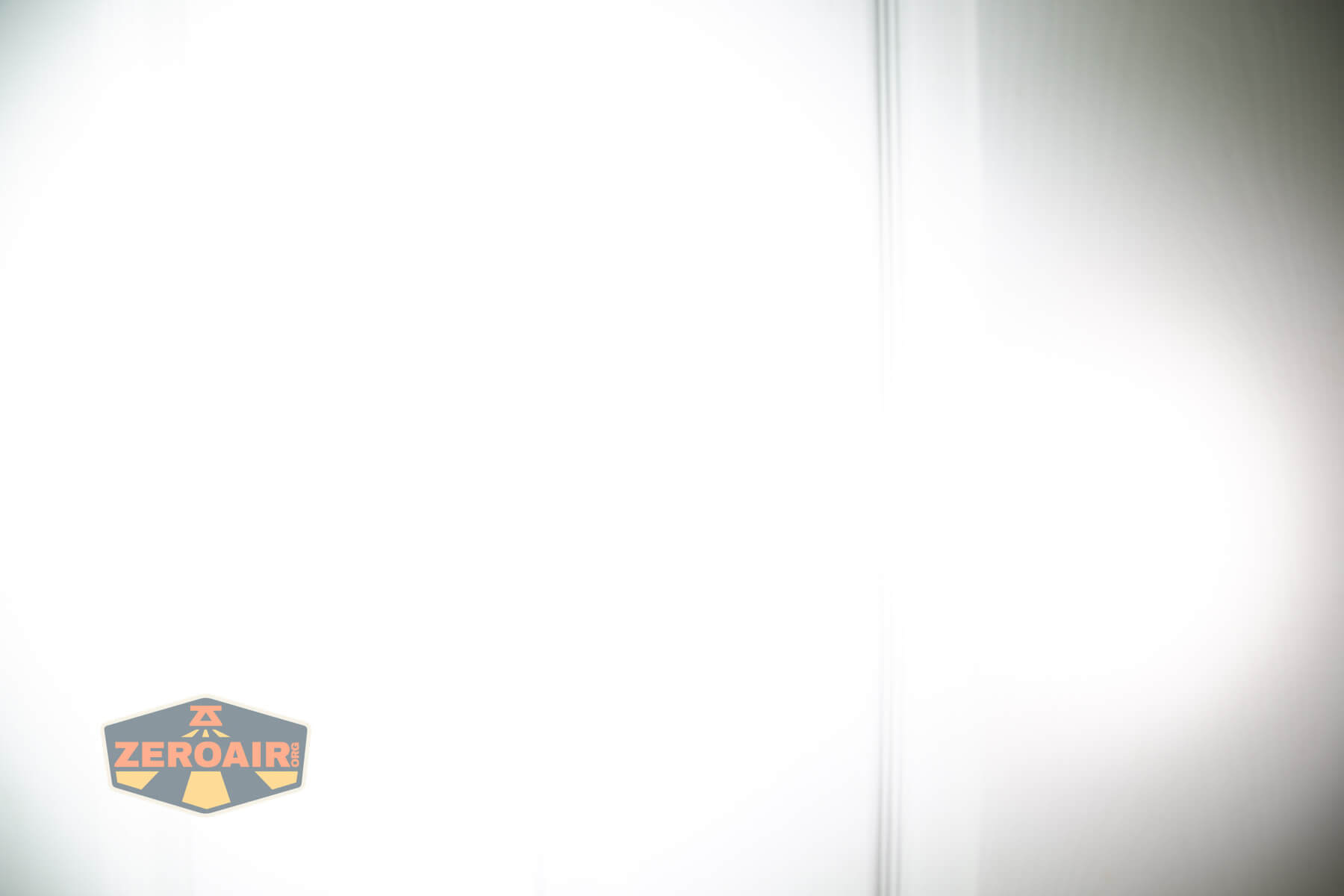






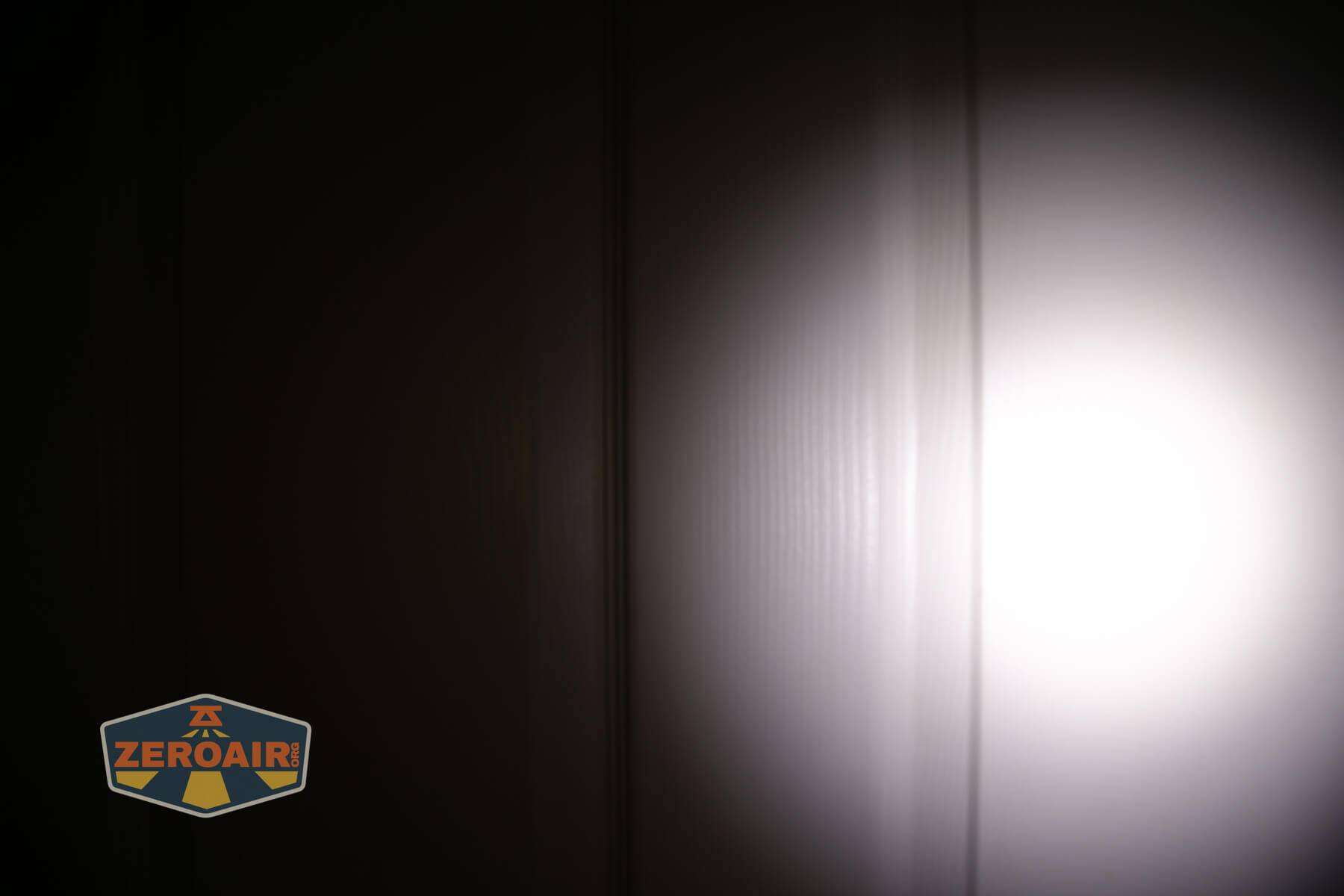







Is there any way you can mark the temperature in degrees on the side of your charts I can’t really tell what the temperature is I have to ask them to do a very rough estimate which is annoying
The problem with offering that information is that it implies I’ve collected it in some specifically accurate way. But most often, the temperature sensor is just attached to the light in whatever way I can attach it. Not always at the bezel, or on the “hottest spot” (wherever that even might be). And even if it was always in the most perfect spot, there’s just too much other going on to say “this specifically is the max temperature.”
So I just have the chart there with the temp line very much as background information for the idea of what temperature does. I hope it helps as it is!
Thanks!